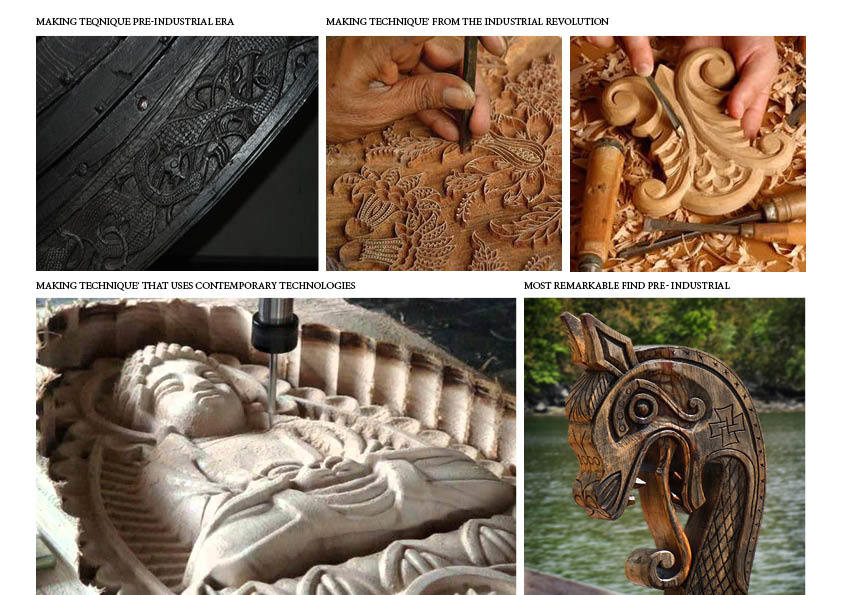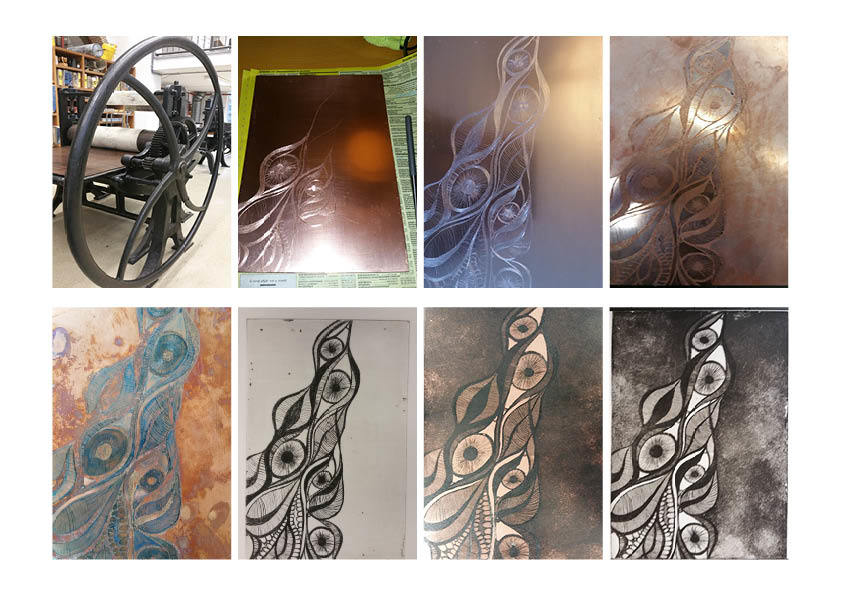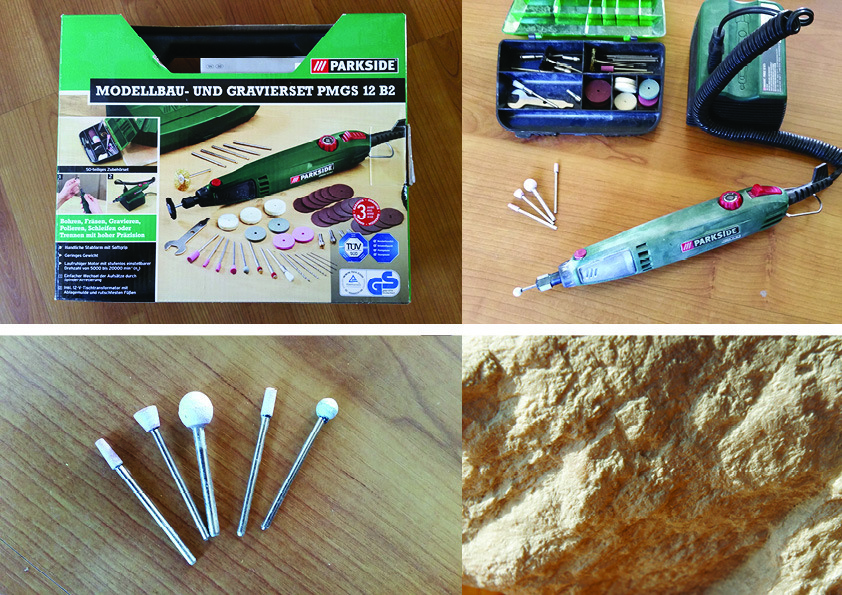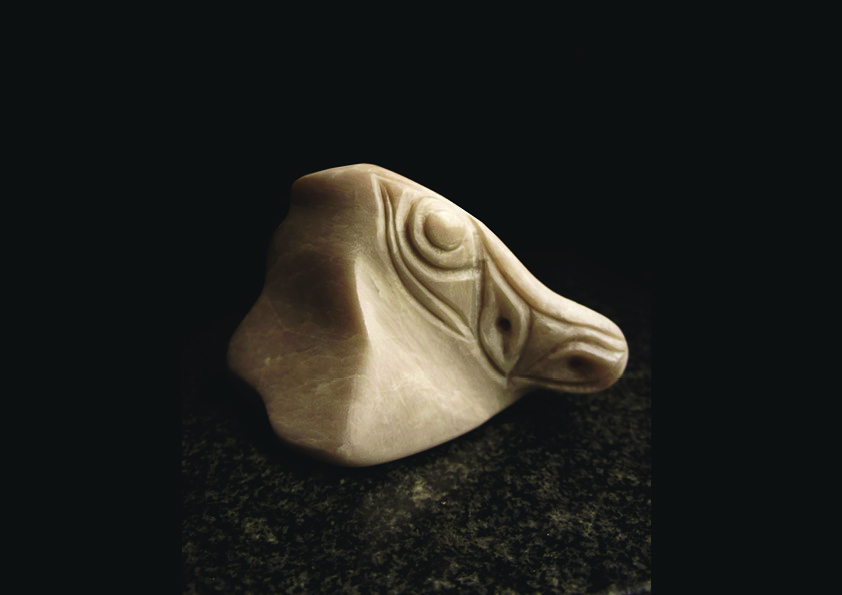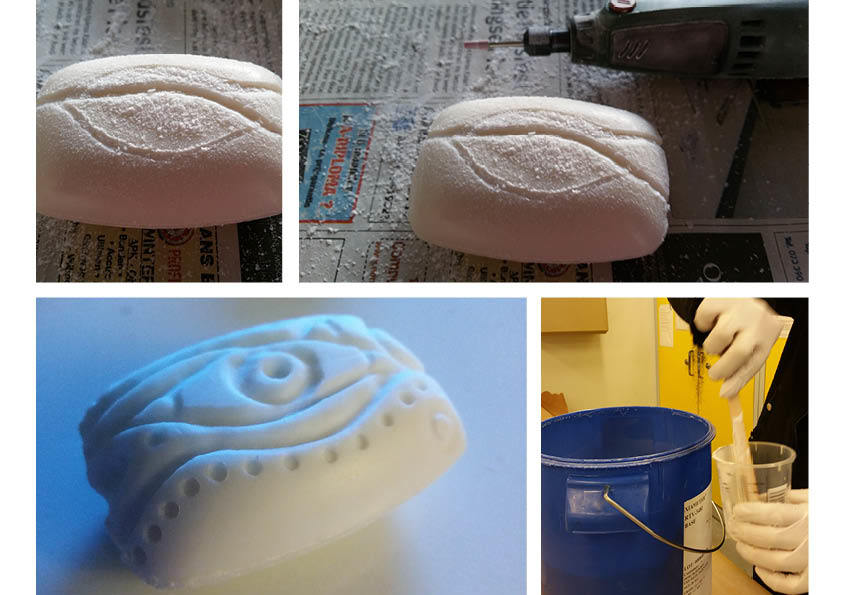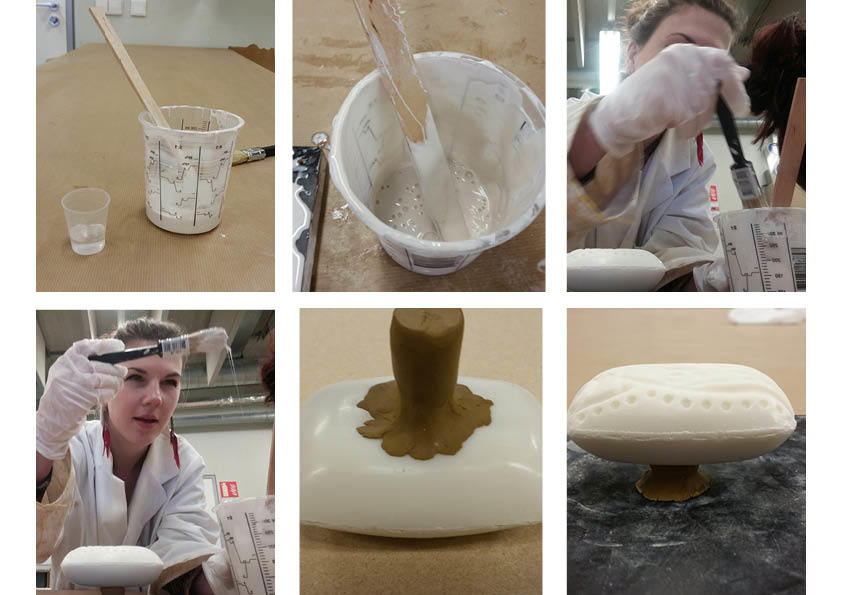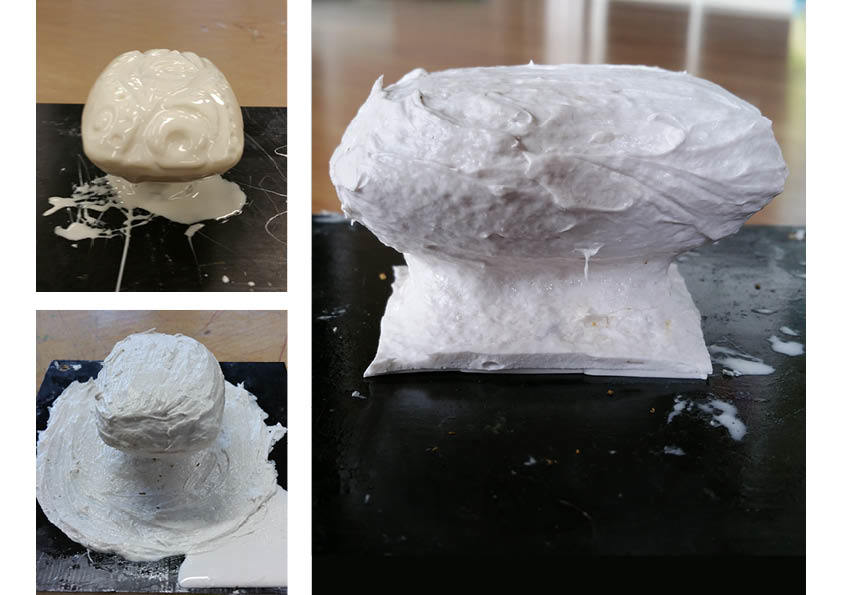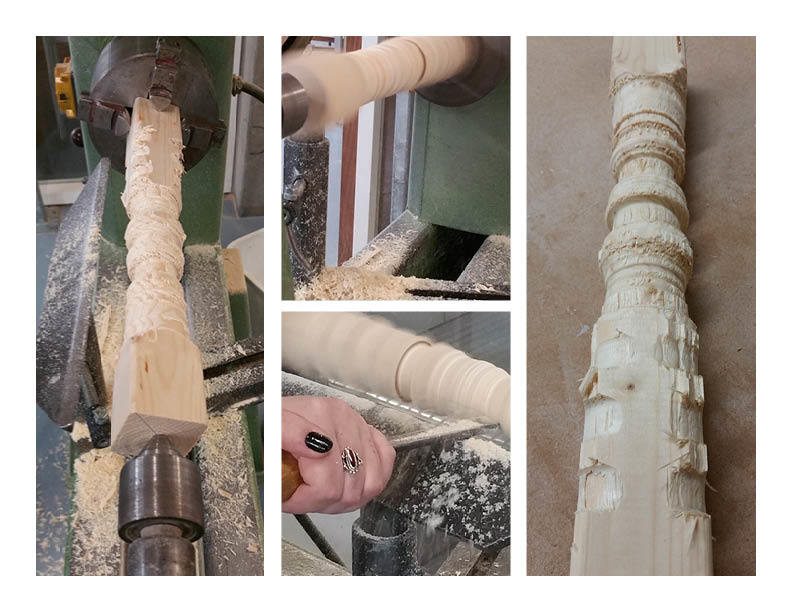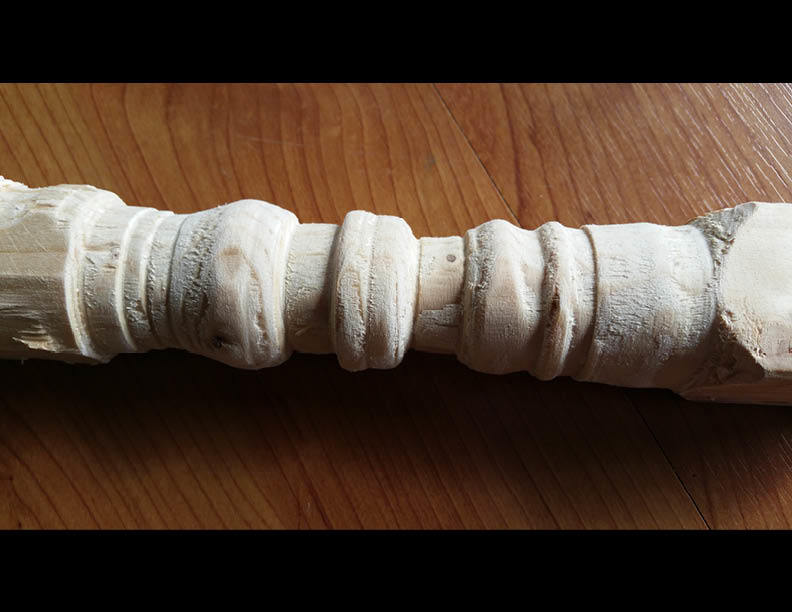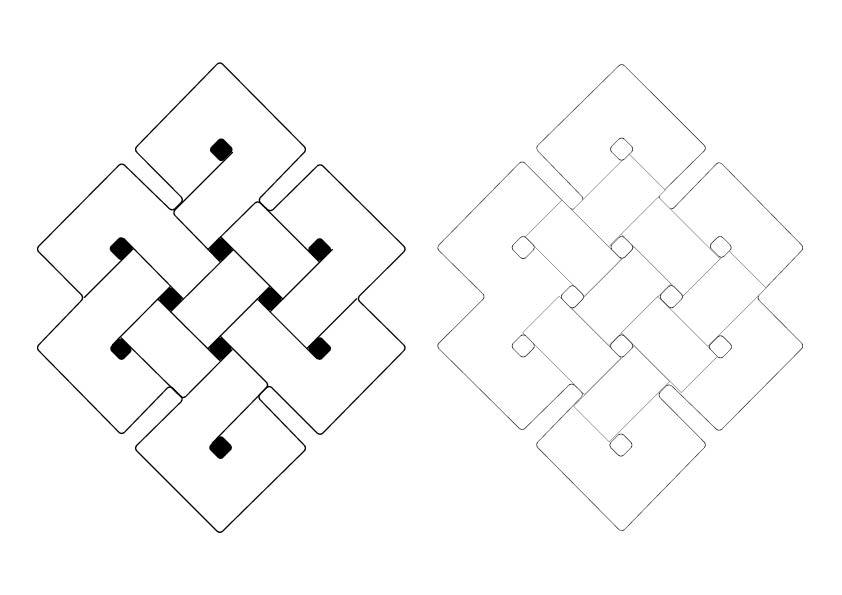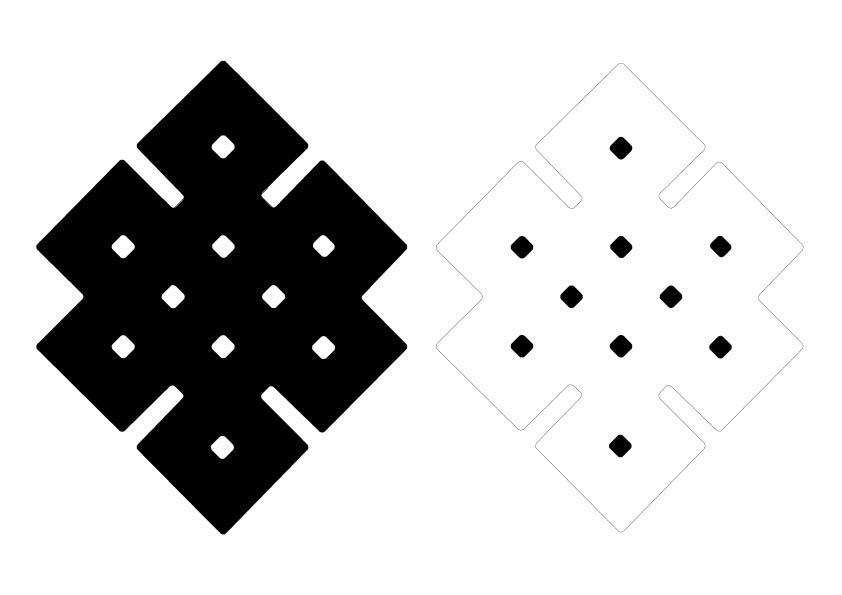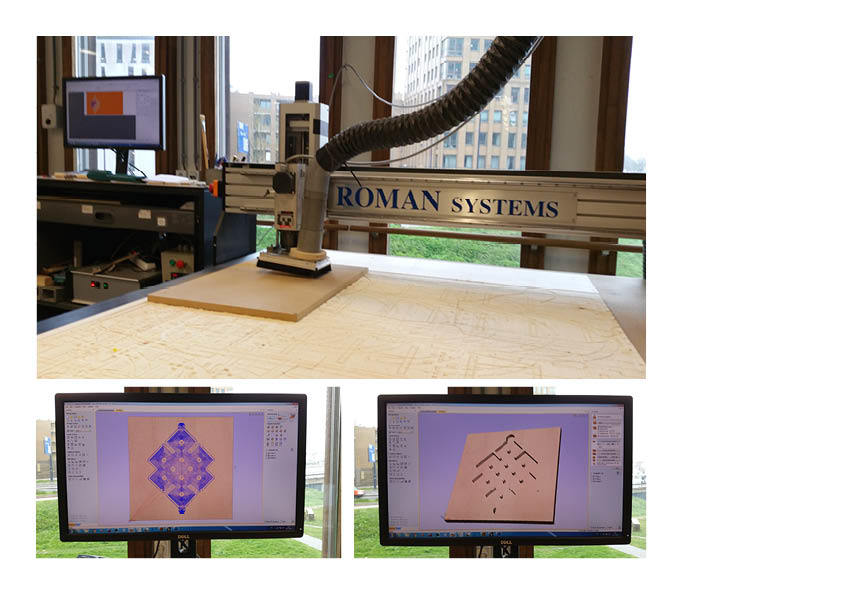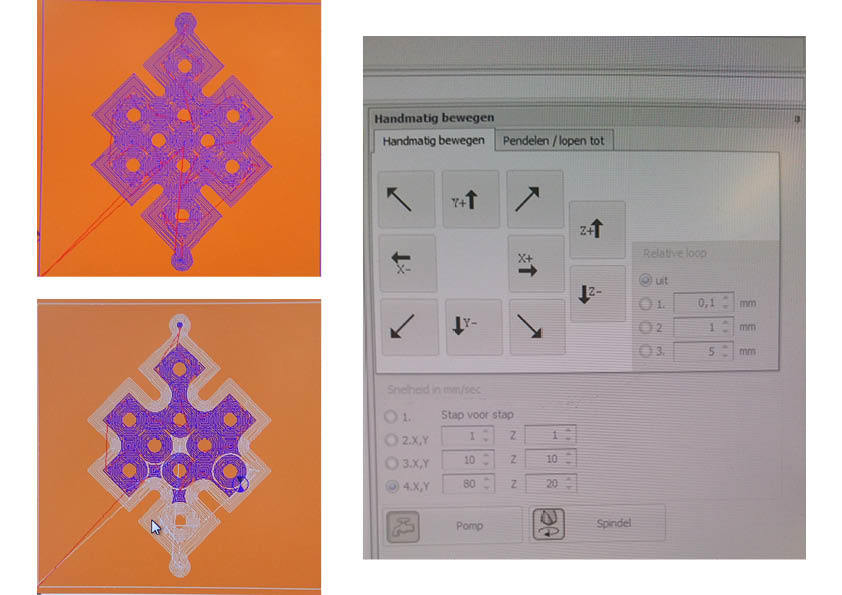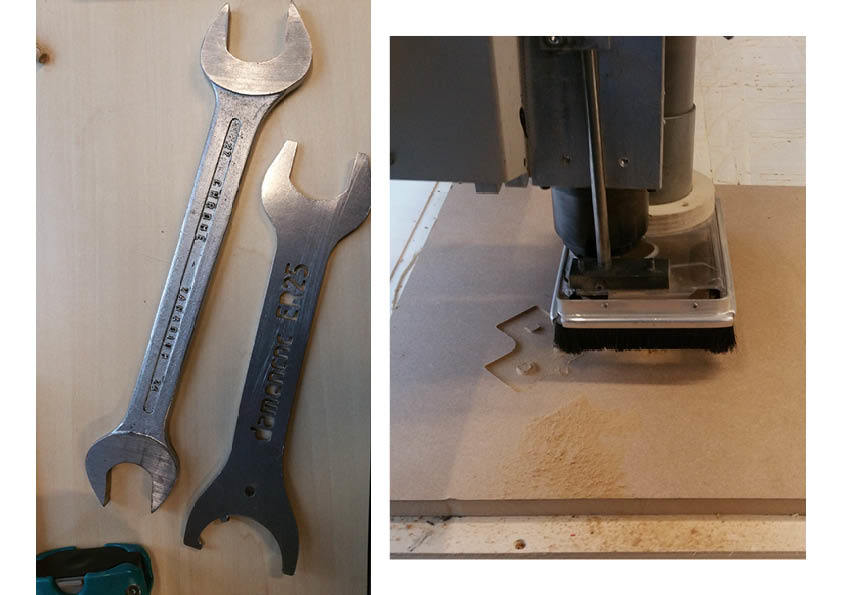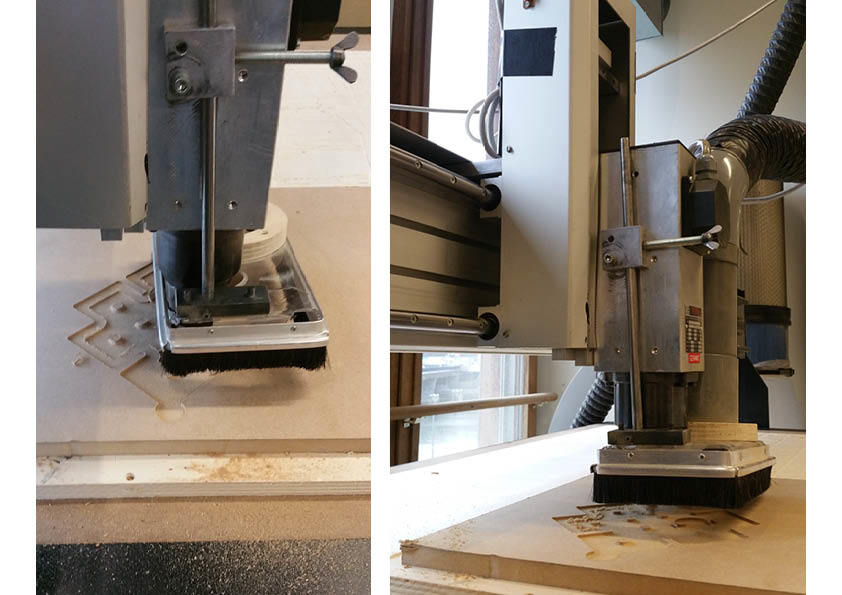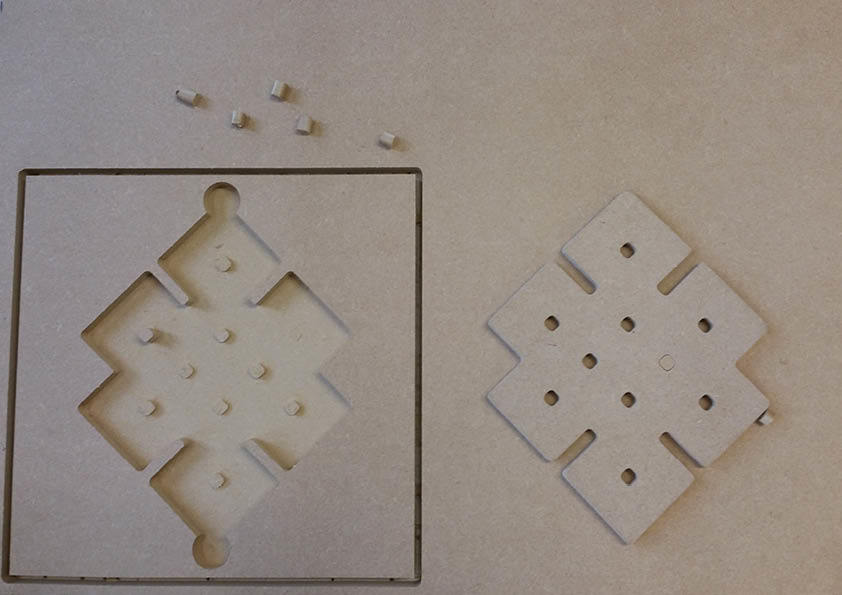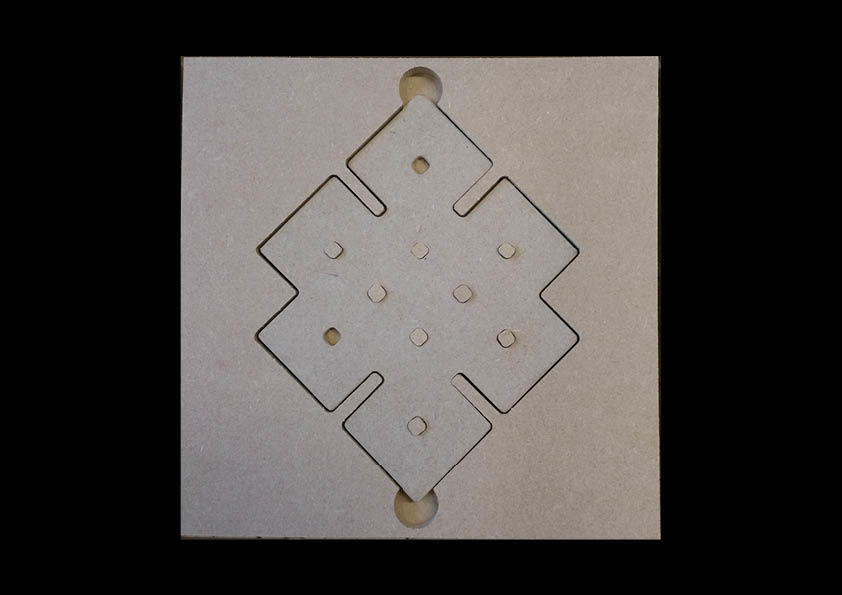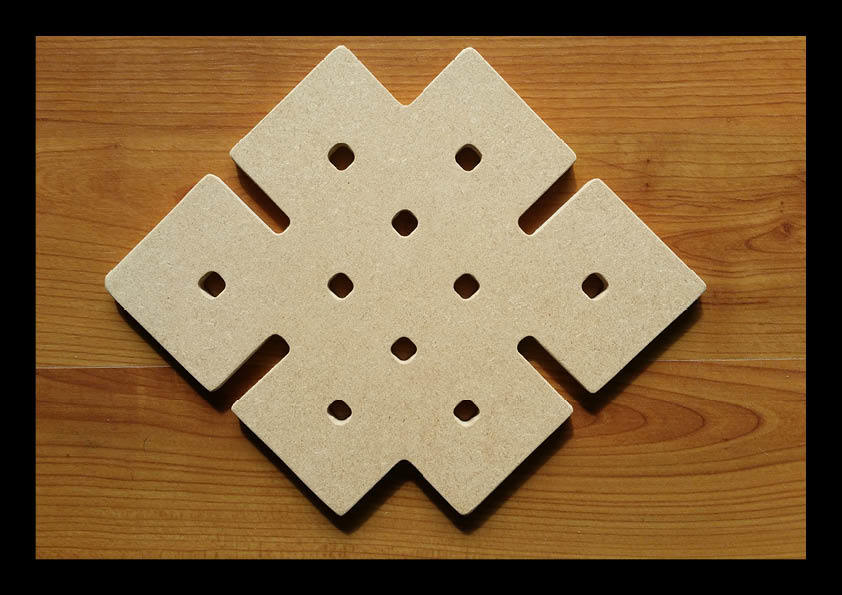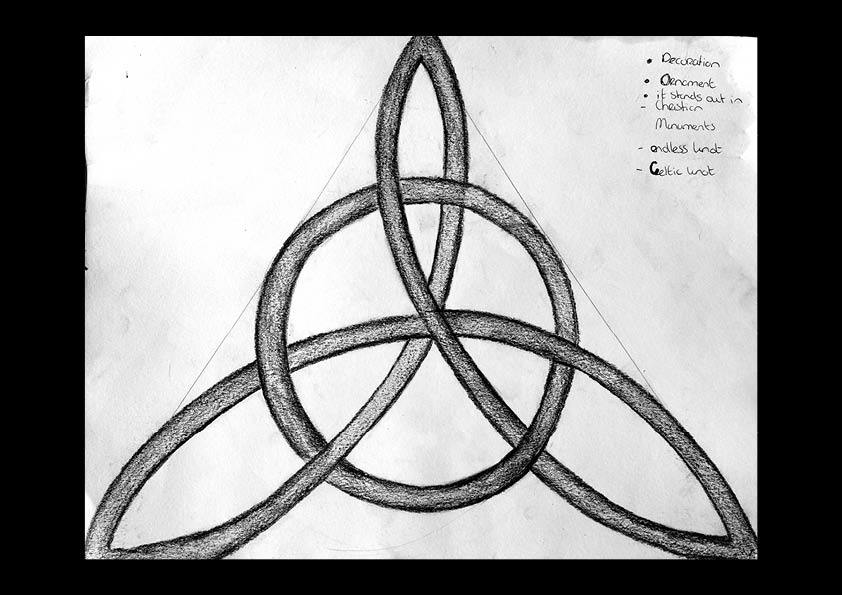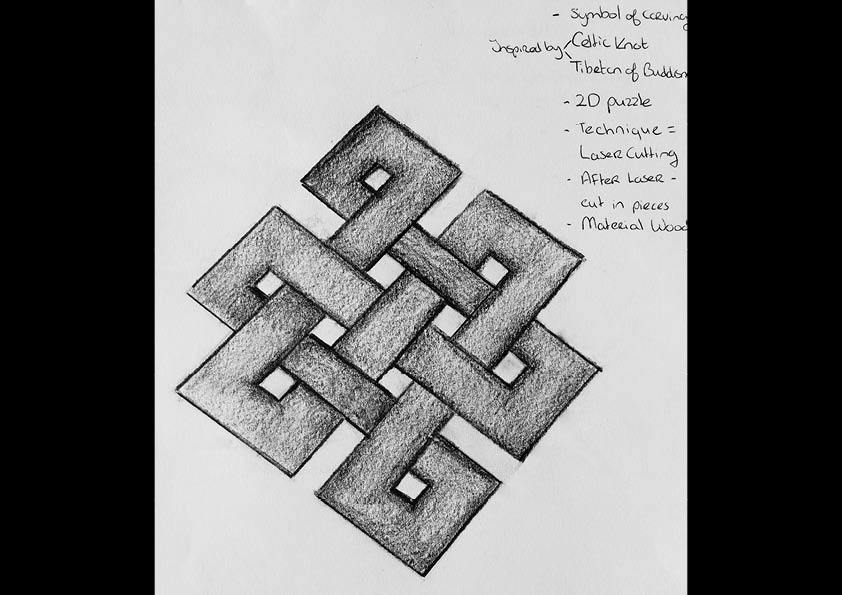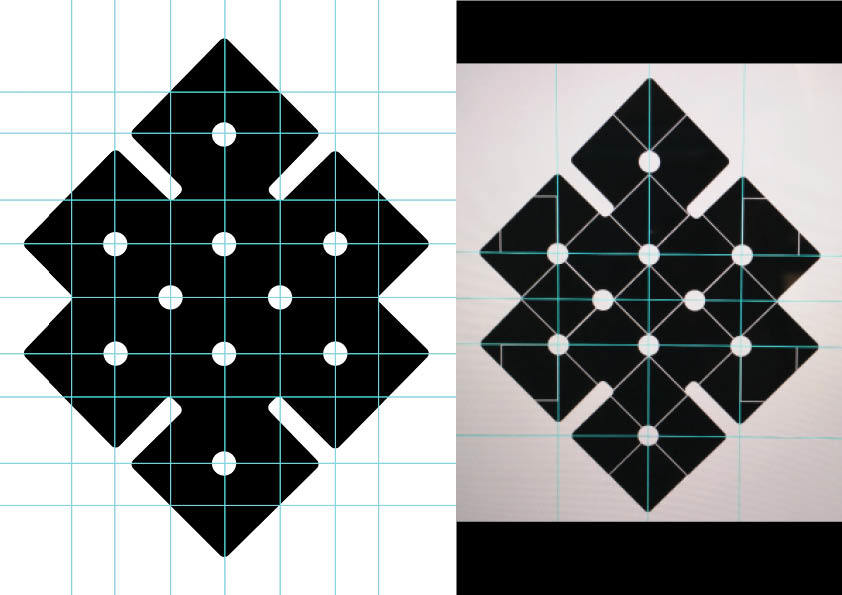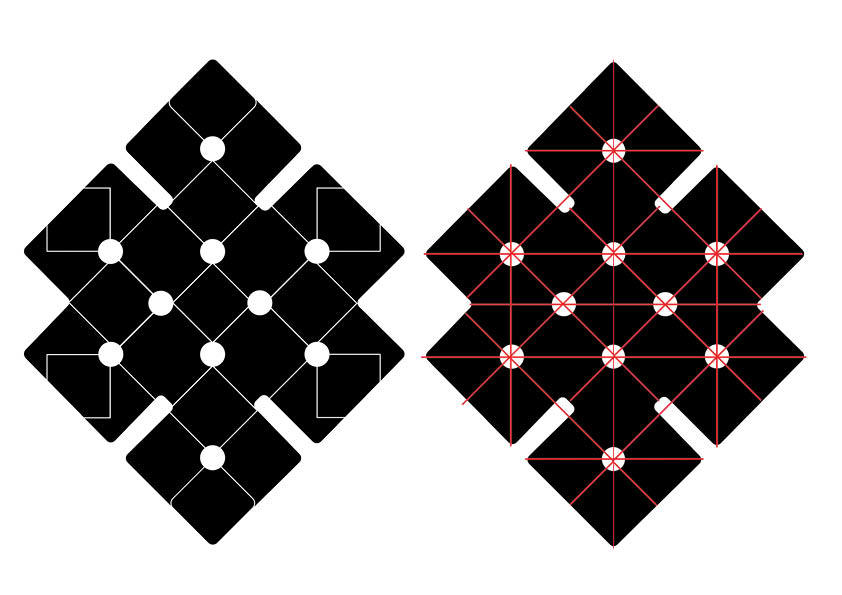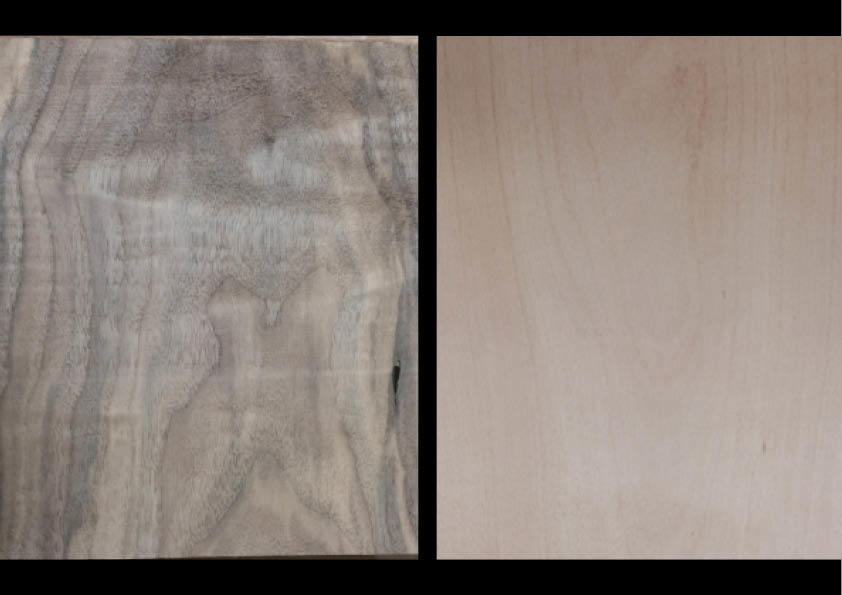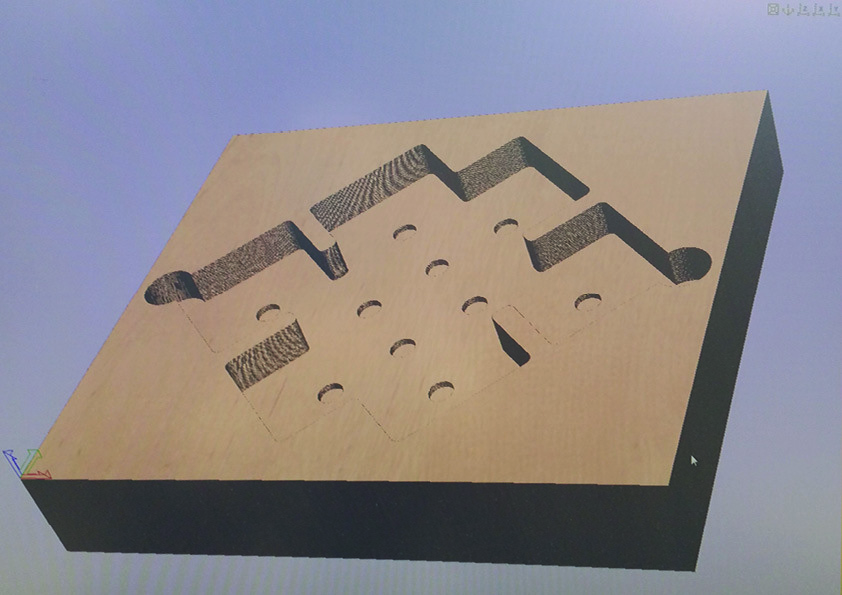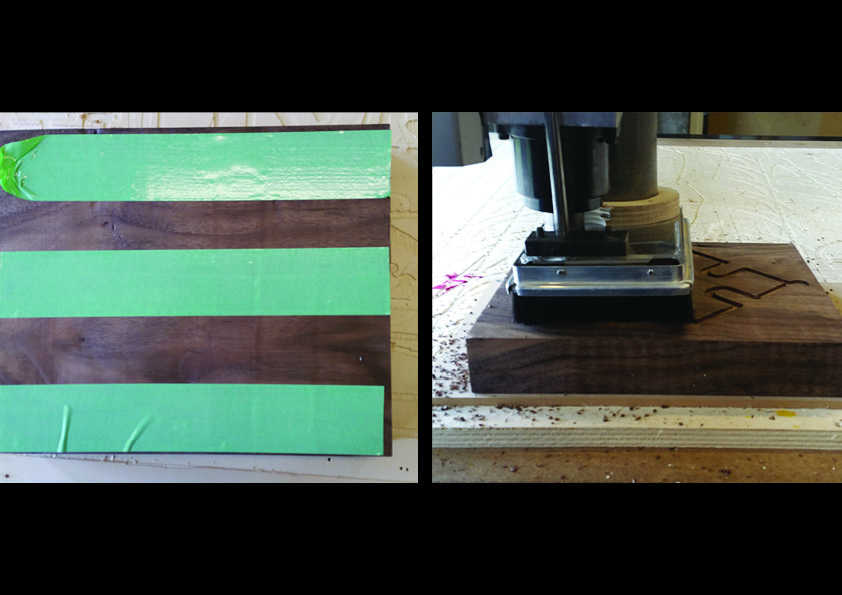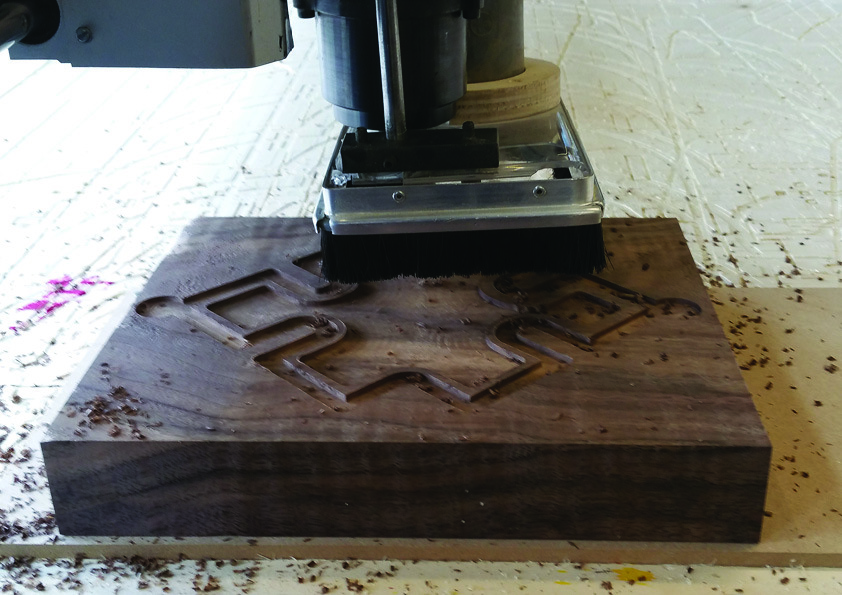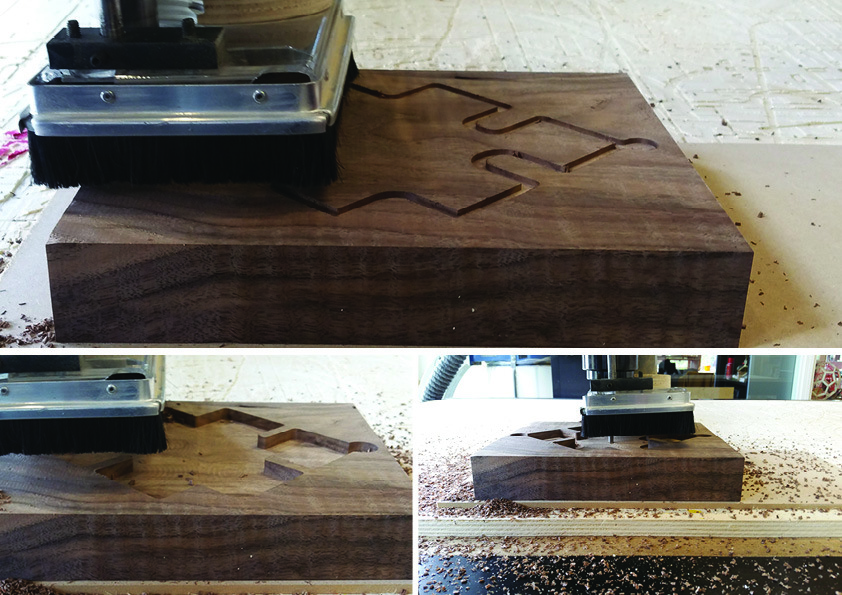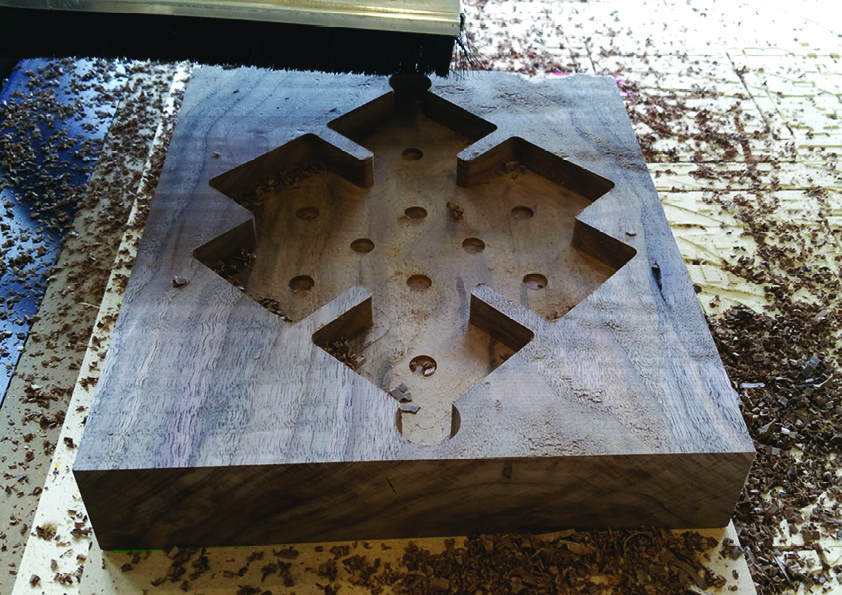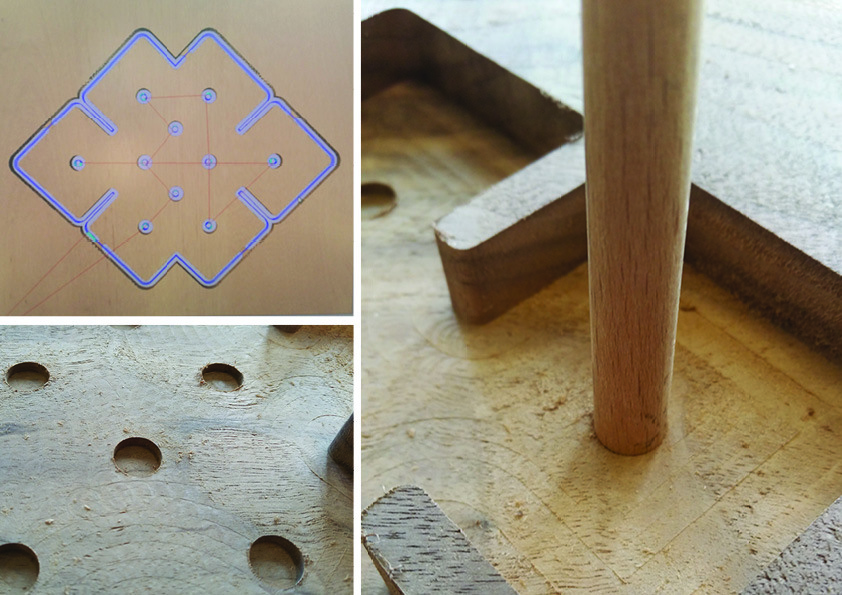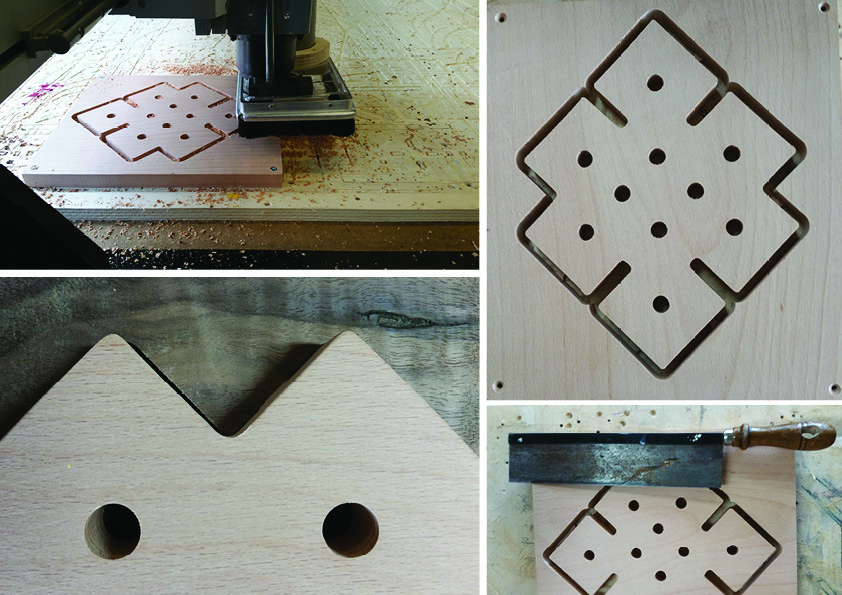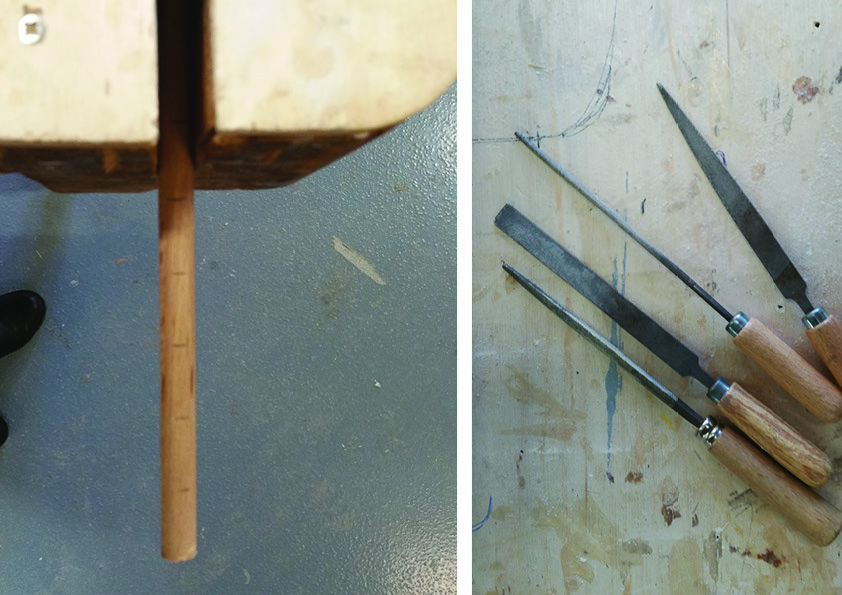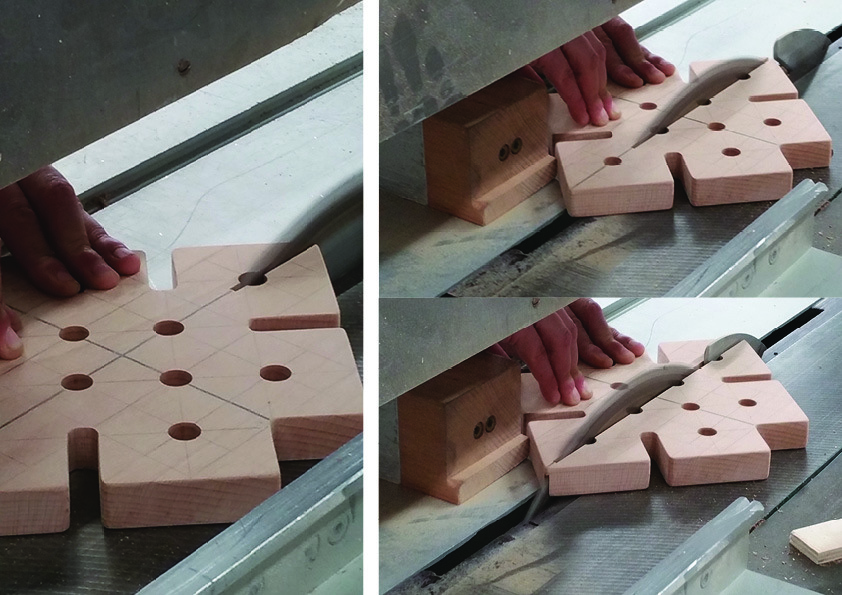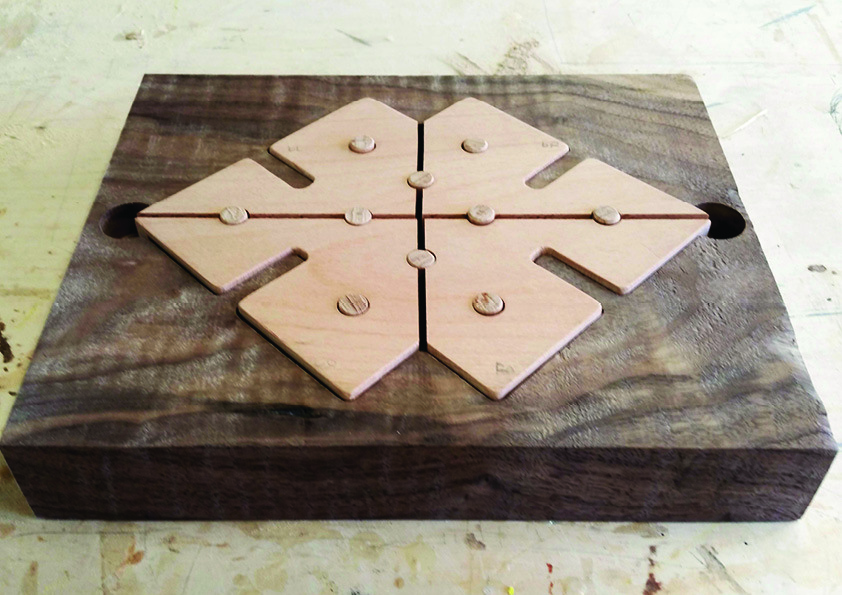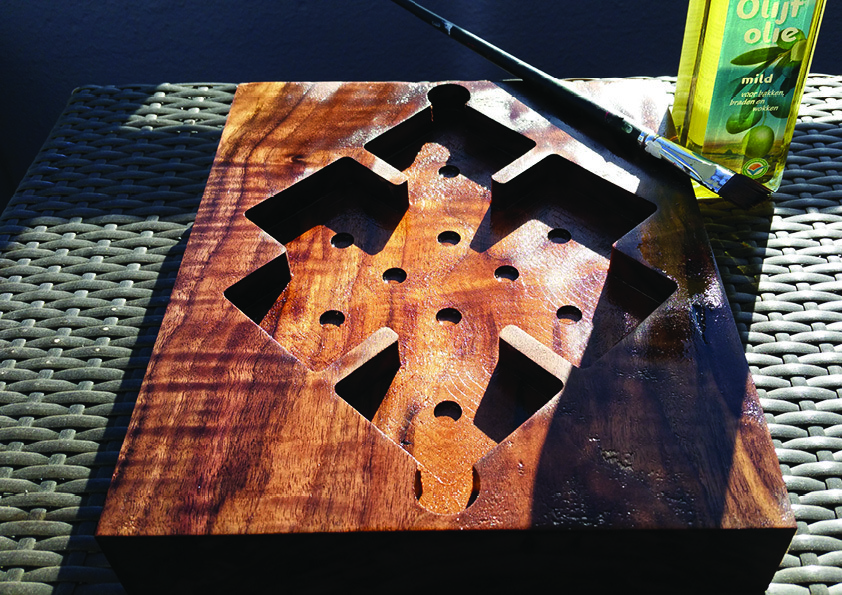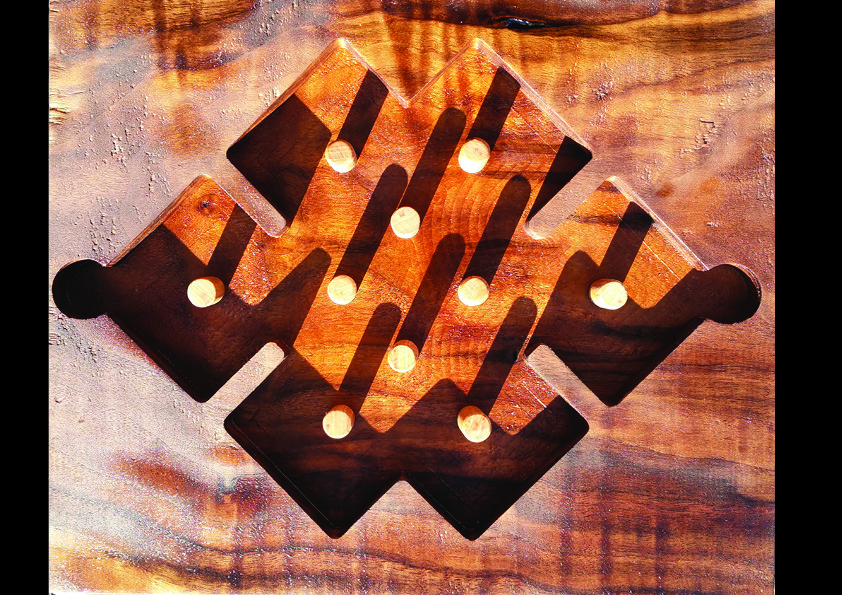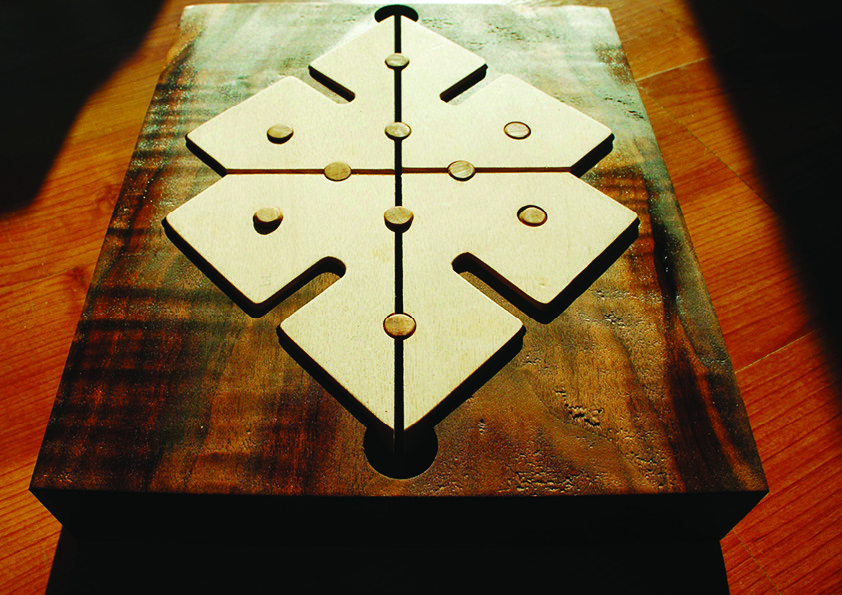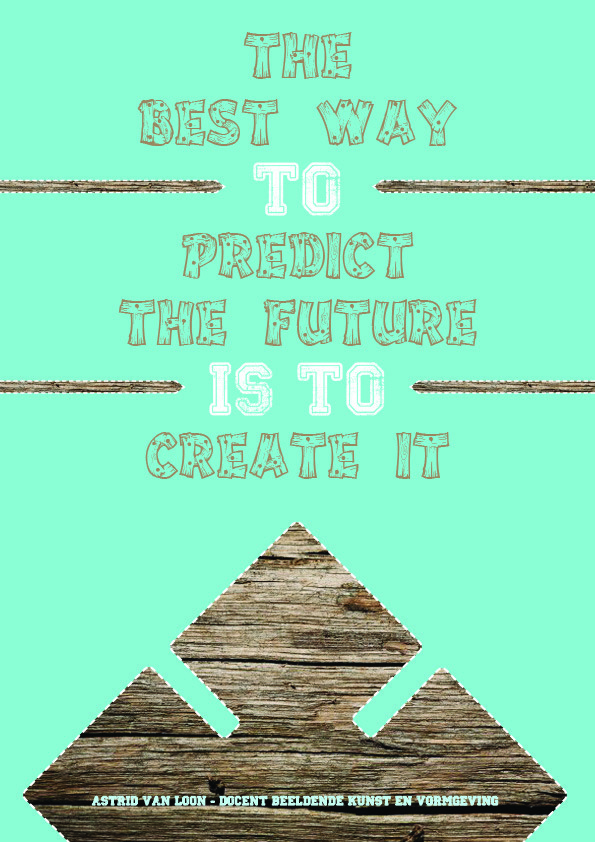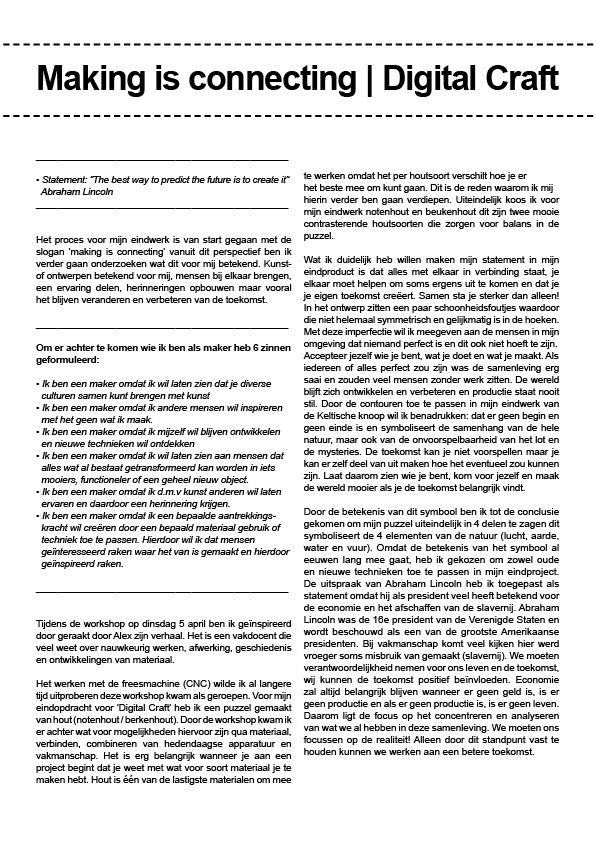Difference between revisions of "User:AstridvanLoon"
(Created page with "email: astridvanloon_1991@hotmail.com") |
|||
| (94 intermediate revisions by the same user not shown) | |||
| Line 1: | Line 1: | ||
| − | + | Astrid van Loon | 0896899 | DBKV VT2B | Email: astridvanloon_1991@hotmail.com | |
| + | |||
| + | _____________________________________________________________________________________________________________________________________________________________ | ||
| + | |||
| + | [[File:pictures_les2.jpg|Pictures Carving]] | ||
| + | |||
| + | |||
| + | ==='''Notes on texts'''=== | ||
| + | |||
| + | ==='''The meaning of making: philosophies of craft'''=== | ||
| + | |||
| + | ==='''What is craft?'''=== | ||
| + | Craft might suggest the careful work of a woodcarver of ceramicist, a skilled practice of making beautiful objects. The term might be associated with traditional and rather twee items wich you might have seen on sale at craft fairs, or it might suggest a newer, cool approach to making things yourself, as seen in the recent rise of knitting, craft fairs, DIY culture, and other trendy craft activities. The term ‘craft’ is further complicated by its relationship with art. Somehow the concepts are still separate: | ||
| + | Art tends to mean the truly creative transformation of ideas and emotions into visual objests. Craft having been shoved out of that space – ends up indicating the less prestigious production of carving or pots, by less creative people who just like doing it. | ||
| + | People see art as superior, and instead to regard its stance as unnecessarily pretentious and exclusive, and therefore rather silly, in comparison to the more earthy, engaged spirit of craft. There is still, of course, the problem that this may not be the majority or dominant view. | ||
| + | |||
| + | ==='''John Ruskin'''=== | ||
| + | Ruskin was extremely prolific. He is remembered primarily as an artist and art critic, and as a social thinker, but he also produced poetry and fiction, and wrote about architecture, geology, literature, science, and the environment. It is his ideas about art and society, and his critique of the dehumanized model of industrial production which we will focus on here. John Ruskin was not a central participant in the Arts and Crafts Movement, English or American, but was an inspirational harbinger of its coming and a major influence on its proponents. For example, William Morris, often called the father of the Arts and Crafts Movement, admired Ruskin and was strongly influenced by his writings and social commentaries. Years after being introduced to Ruskin's works, Morris recalled it and stated, "To some of us when we first read it, now many years ago, it seemed to point out a new road on which the world should travel." | ||
| + | In truth, the mid 19th century writings of John Ruskin laid the foundations for many of the craftsman style values of the Arts and Crafts Movement. His writings predicted and commented on social issues such as environmentalism, sustainability, craftsmanship, and fulfilling labor. Most importantly for the Arts and Crafts Movement to come, Ruskin called for a revival of traditional craftsmanship and a return to the spiritual values of handcrafting from natural materials. | ||
| + | Two of his most influential works, The Seven Lamps of Architecture (1849) and The Stones of Venice (1851-53, a trilogy), addressed the subjects of nature, art, society, and skilled craftsmanship, and attacked division of labor (industrialized workforce specialization) and industrial capitalism. Such topics are truly close to the heart of the Arts and Crafts Movement. | ||
| + | |||
| + | ==='''William Morris'''=== | ||
| + | It was this emphasis on the power of individually crafted work which caught the attention of the young William Morris. As we have seen, this approach, suggested by Ruskin, is not (simply) a celebration of individualistic ‘making things’ but rather has profound social implications. Like Ruskin, he felt that workers should be able to take pleasure from making beautiful things from the finest materials. | ||
| + | Interesting point for my research: The notion that one arm of science and technology should be used to fix the environmental degradation caused by the other arm remains controversial, but Morris was 140 years ahead of the current debates. | ||
| + | The artist should be humble, engaged with the everyday, and willing to make things themselves – to get their hands dirty, as it were. As Morris puts it: ‘The best artist was a workman still, the humblest workman was an artist. | ||
| + | |||
| + | ==='''The invention of craft'''=== | ||
| + | Craft's has a reputation as something that has always been with us. People have always been making things, from this perspective craft is intrinsic to what it is to be human. Industry is the more steady performance of this. Industry is seen as a tide of depersonalization. That is why some people believe we have to go back to the times of craft, were products were made in special ways and its organic role in society. This is the usual way of looking at it. | ||
| + | This text says that craft itself is a modern invention. It is something that came with the industrial revolution. Craft was not a static backdrop against which industry emerged like a figure from the ground. Rather the two were created alongside each other. Artisans were drummed out of work by machines, with tragic consequences for the experience of the maker and the quality of the things they produced. William Morris had ideas based on the philosophy of John Ruskin and Karl Marx, were formative to an international craft revival to undo the pernicious effect of industrialization. Morris and his followers saw themselves as the people that would help to restore the position of craft mans to their historical place so they would be masters of there own hands again. | ||
| + | There is just as much willful blindness among the craft reforms as their opponents. | ||
| + | |||
| + | ==='''Acceptera craft'''=== | ||
| + | We often believe there to be an important difference between handcraft and industry in the character and sentimental value of their products. We then readily equate handcraft with the handmade and industry with the machine-made. It is obvious that this is not correct. | ||
| + | We judge a product on the following way: is it handmade of machine made? Is it beautiful is it ugly? Is it good or bad quality? We are undoubtedly influenced by the change in opinion toward the outcomes of industry and handcraft that was propagated by Ruskin and Morris during the second half of the 19th century. Handcraft became a competition for the industry. Ruskin believed about craft that only handcrafted methods were fit for human beings, and only handcraft could create harmonious individuals. People thought industrial stud looked cheap, and people did not want cheap stuff in their homes. | ||
| + | |||
| + | This was a false generalization, both machines and human hands can produce high quality goods. We often still attempt to give factory goods the appearance of handcrafts. This is is then often called ‘antiques’. The production of ‘oriental’ objects has gone the same. If you travel you will be able to buy factory made crafts. Costumers value quality, so they make imitations. | ||
| + | Is there a dividing line between industry and handicraft? Working with hands and the use of machines alternates in both handicraft and industrial production. The use off machines tells nothing about whether a enterprise should rightly be classified as industry or handicraft. | ||
| + | What is industry then? The industrial process involves, as a rule, the production of a series of standardized, interchangeable parts assembled as units trough the rational decision of labor with as few different actions performed by hands as possible. | ||
| + | What is handicraft? Handicraft is usually executed on commission and cater to a relatively small group of costumers. They attempt to satisfy the specific desire of individual purchasers. They generally produce unique objects, which differ from each other in their dimensions, form and use. | ||
| + | You can divide all goods in everyday needs and luxuries. But for every person this will be different. Off everyday house hold goods we think for example: they should be affordable and useful. We want to create objects that we can both feel attachment to and work well and beautifully. The obvious task for everyday things is to be of service. But we have shown more interest in appearance then efficiency. In this way the general public’s interest in good form has needs linked to goods intended for ostentatious display. Industry is not a place for making unique objects, handicraft is. Industry will make functional products | ||
| + | |||
| + | |||
| + | ==='''Experiments:'''=== | ||
| + | |||
| + | |||
| + | ==='''Etching'''=== | ||
| + | |||
| + | Etching is traditionally the process of using strong acid or mordant to cut into the unprotected parts of a metal surface to create a design in the metal. I really wanted to try this method for a pretty long time, and I thought now was the perfect opportunity. It is a method of print making, but I feel like the copper plate itself is already very special. I love how the plates of old master pieces often still exist because the material will last very long. I first tried the basic method. Using wax to cover the plate and scratch that off. Then I had to soak the plate in acid so it was engraved because the parts that are not covered with wax will dissolve. | ||
| + | |||
| + | ==='''History of the technique'''=== | ||
| + | |||
| + | The process as applied to printmaking is believed to have been invented by Daniel Hopfer (circa 1470–1536) of Augsburg, | ||
| + | Germany. Hopfer was a craftsman who decorated armour in this way, and applied the method to printmaking, using iron plates (many of which still exist). | ||
| + | Apart from his prints, there are two proven examples of his work on armour: a shield from 1536 now in the Real Armeria of Madrid and a sword in the | ||
| + | Germanisches Nationalmuseum of Nuremberg. An Augsburg horse armour in the German Historical Museum, Berlin, dating to between 1512 and 1515, | ||
| + | is decorated with motifs from Hopfer's etchings and woodcuts, but this is no evidence that Hopfer himself worked on it, as his decorative prints were | ||
| + | largely produced as patterns for other craftsmen in various media. The switch to copper plates was probably made in Italy, and thereafter etching soon | ||
| + | came to challenge engraving as the most popular medium for artists in printmaking. Its great advantage was that, unlike engraving where the difficult | ||
| + | technique for using the burin requires special skill in metalworking, the basic technique for creating the image on the plate in etching is relatively easy | ||
| + | to learn for an artist trained in drawing. On the other hand, the handling of the ground and acid need skill and experience, and are not without health and | ||
| + | safety risks, as well as the risk of a ruined plate. | ||
| + | |||
| + | ==='''What I did'''=== | ||
| + | |||
| + | Before I started I had to prepare my plate. I had to use fine steel wool and a piece of cloth and rub copper oil on to the plate till the surface was super shiny and smooth. With a hand file I beveled the edges of the plate. This is because otherwise the sharp edges can damage the paper when it goes trough the press. After that i degreased the plate. I did that with soy sauce and a piece of spunge. Then I washed the plate under running water, and put it in an oven for a few minutes to dry. When the plate was fat fry I was started with etching the plate. The design i already make earlier. After 3 hours I was done with the design. | ||
| + | I first tried the basic method. I used wax to cover the plate, baked it in the oven and scratch that off. Then I had to soak the plate in acid so it was engraved because the parts that are not covered with wax will dissolve. | ||
| + | It was a very long proces because every time when you bring an other layer on the plate you needed to wait. First time 1 minut in the acid 15 minutes in the oven, second time 2 minutes in the acid 15 minutes in the oven, third time 4 minutes in the acid 15 minutes in the oven en the fourth en last step was 8 minutes 15 minutes in the oven. I also used the dry needle technique. | ||
| + | |||
| + | [[File:pictures_Etching.jpg|Pictures Etching]] | ||
| + | |||
| + | ==='''Soapstone carving'''=== | ||
| + | ==='''History'''=== | ||
| + | |||
| + | Soapstone varies in different kinds of hardness based on the amount of talc it contains. When soapstone has a talc density around 70-80% it is relativly soft and easy to carve. When the density of talc gets lower it becomes more like a regular rock which is used in architecural structures. When u cant carve the stone with a knife the stone can not be called soapstone anymore. Architectural use is currently the most common application of soapstone. There is currently one active soapsone mine in America and other soapstone mines are located in Brazil, India and Finland. | ||
| + | |||
| + | Soapstone can be used to craft different kinds of objects like sculptures, kitchen countertops and sinks and other daily objects. Because of the heat resistent properties of the soapstone it has also been used to make ovens, molds and smoking pipes. The use of soapstone started in the late Archaic archeological period. | ||
| + | In the 19th century in Georgia, USA, the locally quarried soapstone was used for mortuary tablets and tombs. The early vikings hewed soapstone directly from the stone face and made it into cooking-pots. In the 5th-3rd millennia BC, the ancient trading city of Tepe Yahya in Iran was the center of production and distribution of soapstone. In a state in Brazil, Minas Gerais, soapstone is still commonly used to produce objects like pots and pans, wine glasses, jewel boxes and statues. This is because of the abundance of soapstone mines in this brazilian state. A well known sculpture is the Christ the Redeemer statue in Rio de Janeiro. | ||
| + | |||
| + | ==='''What I did'''=== | ||
| + | |||
| + | I was inspired by nature to start carving this soapstone sculpture. The concept for the design is that everything starts by observing your surroundings. I like soapstone because it has a very organic form which you can also find in nature. The design I used for this project was already created by me for the etching project. I took a piece of the design and altered it to fit the stone. Before I started carving the stone I had to make the surface of the stone smooth. For this I used sandpaper with different kinds of grains. starting with the biggest grain paper and ended with the smallest grain paper to make the surface as smooth as possible. The backside of the stone still has the original surface to preserve a part of the original organic form. For carving the stone I used a handheld milling machine with different kinds of bits. The different kinds of bits allowed me to make a smooth surface and also create different layers of relief on the sculpture. You can also alter the speed at which the machine spins to make it easier to apply the finishing touches. Even while using the milling machine it took me a lot more time then expected, wich gave me insights into the effort people had to put in while working with soapstone without modern day tools. | ||
| + | |||
| + | |||
| + | [[File:Soapstonecarving p1.jpg|Caption]] | ||
| + | |||
| + | [[File:Soapstonecarving p2.jpg|Caption]] | ||
| + | |||
| + | [[File:Soapstonecarving p3.jpg|Caption]] | ||
| + | |||
| + | ==='''Soap carving'''=== | ||
| + | |||
| + | ==='''Carving daily objects'''=== | ||
| + | |||
| + | Carving in soap, create forms and you can use it as a mold to multiply the object. | ||
| + | |||
| + | Together with Simone and Marieke I carved three different soaps. After this we went to the ceramic station, where we greased the form with silicone to make a mold. While creating the mold we encountered some problems regarding the silicone layers needed to craft it. The first 3 'soft' layers of silicone were a succes and needed 24 hours to dry before the next layer could be added. While applying the fourth and last layer, which is the strongest needed to finish the mold, we found out that the last layer did not bind with the other layers. The soap and previous silicone layers had a chemical reaction which caused this. | ||
| + | |||
| + | |||
| + | [[File:Soap experiment.jpg|Caption]] | ||
| + | |||
| + | [[File:Soap experiment2.jpg|Caption]] | ||
| + | |||
| + | [[File:Soap experiment3.jpg|Caption]] | ||
| + | |||
| + | ==='''Wood carving'''=== | ||
| + | |||
| + | Woodturning is a form of woodworking that is used to create wooden objects on a lathe. Woodturning differs from most other forms of woodworking in that the wood is moving while a stationary tool is used to cut and shape it. Many intricate shapes and designs can be made by turning wood. | ||
| + | There are two distinct methods of turning wood: spindle turning and bowl or faceplate turning. Their key difference is in the orientation of the wood grain, relative to the axis of the lathe. This variation in orientation changes the tools and techniques used. In spindle turning, the grain runs lengthways along the lathe bed, as if a log was mounted in the lathe. Grain is thus always perpendicular to the direction of rotation under the tool. In bowl turning, the grain runs at right angles to the axis, as if a plank were mounted across the chuck. When a bowl blank rotates, the angle that the grain makes with the cutting tool continually changes between the easy cuts of lengthways and downwards across the grain to two places per rotation where the tool is cutting across the grain and even upwards across it. This varying grain angle limits some of the tools that may be used and requires additional skill in order to cope with it. | ||
| + | In spindle turning, the wood is fixed between 2 points. The spur center digs into the wood and is powered by a motor. The other, a hard center or a live center may be a point or set of points in the tail-stock. In face plate turning, the wood is secured with screws to a faceplate or in a chuck or jig. the tail stock and a center may also be used for added support on large pieces with a faceplate. Most bowls, platters and many vessels are face plate turned, while pens, furniture legs, spindles, and some vessels are spindle turned. The method used may differ depending on the shape of the blank and the technique of the turner, and both methods may be used on the same piece. | ||
| + | |||
| + | When wood is cut in such a way that the fibre being cut is not supported by the fibre below it, it tends to separate and tear. This “tear out” exhibits a rough, highly damaged looking surface texture and greatly reduces the value of any product exhibiting it. The direction of cut is different in spindle turning and faceplate turning because cutting in the wrong direction can cause tear out. Spindle turning cuts are made from high points toward the axis on the outside of the piece, and from the axis toward the outside when hollowing. When faceplate turning, the opposite applies. | ||
| + | |||
| + | ==='''History of the technique'''=== | ||
| + | |||
| + | The origin of woodturning dates to around 1300 BC when the Egyptians first developed a two-person lathe. One person would turn the wood with a rope while the other used a sharp tool to cut shapes in the wood. The Romans improved the Egyptian design with the addition of a turning bow. Early bow lathes were also developed and used in Germany, France and Britain. Sometime after the turning bow was developed, a lathe was created that spun when a lever was pumped by hand. Early lathe workers would sometimes use their bare feet to hold cutting tools in place while using their hand to power the lathe. In the Middle Ages a pedal replaced hand-operated turning, freeing both the craftsman’s hands to hold the woodturning tools. The pedal was usually connected to a pole, often a straight-grained sapling. The system today is called the “spring pole” lathe (see Polelathe). Spring pole lathes were in common use into the early 20th Century. Up to this point in history, the lathe operated in a reciprocal manner with the workpiece rotating back and forth as the drive mechanism reset to the loaded position in preparation for the next stroke. This required the turner to alternately apply the tool as the blank spun toward the operator and remove it from the blank as it spun away from him. A two-person lathe, called a “great lathe”, allowed a piece to turn continuously (like today’s power lathes). A master would cut the wood while an apprentice turned the crank on a huge wheel, often several feet in diameter. | ||
| + | |||
| + | During the industrial revolution the lathe was motorized, allowing turned items to be created in less time. The motor also produced a greater rotational speed for the wood, making it easier to quickly produce high quality work. Today most commercial woodturning is done by computer-operated machinery allowing for mass-production that can be created with precision and without the cost of employing craftsmen. Modern professional woodturners are typically either “production” turners producing large quantities of functional pieces, or artistic turners producing smaller numbers of pieces, often enhanced after turning by carving, piercing, coloring, applying pyrography, gilding, or a number of other techniques to produce objects for the art market. From the 1930s, the field of wood turning grew from this hobbyist movement in the 1930s to fine artists in the 1970s, experimenting with super object forms and other fine craft concepts. The Center for Art in Wood, founded in 1986 as The Wood Turning Center, houses a collection in Philadelphia with over 1,000 objects from international artists as well as a research library and gallery. | ||
| + | |||
| + | ==='''What I did'''=== | ||
| + | |||
| + | Together with Simone I went to the wood station. We did not know how to use the wood turn machine so we asked for explanations about how we could use the machine. The supervisor helped us understand the workings of the machine and explained the safety rules to us. Furthermore he taught us some techniques and the best workposture for applying pressure to the tools. We used a piece of hard whitewood and found that it was very difficult to get the right finish because the nerve was sideways. This resulted in a rugged surface and made us see that its better to use a different kind of wood. | ||
| + | |||
| + | |||
| + | [[File:CarvingWood.jpg|Caption]] | ||
| + | |||
| + | [[File:CarvingWood2.jpg|Caption]] | ||
| + | |||
| + | ==='''Workshop milling machine'''=== | ||
| + | |||
| + | ==='''The design:'''=== | ||
| + | Before I started working with the milling machine I had to create a design for it. I had already prepared a design for my endwork in the program Adobe Illustrator and thought it would be a good challange to produce this with the milling machine. The design consisted of several lines which was not possible to produce with the milling machine in one go. The design had to be adapted to consist of 1 contour line because it is a 2d design. To produce different layers is possible but this will take much more time since i dont possess the skill needed to achieve this. My solution to this problem was to simplify the design and produce two seperate parts which can fit onto eachother. | ||
| + | |||
| + | ==='''Technical aspect:'''=== | ||
| + | Before I could start working with the milling machine(CNC) I had to put in the settings of the machine with a program specifically designed for milling. The program is called VCarve Pro, you can use this to enter the size of the object, center it and select the right material with the given lenght of the bit you are using. After this is done you save the settings and you can view the model in 2D and 3D, the pattern the machine is going to use for milling is also visible. The Bit I picked for this project has a diameter of 5,7 millimeter. The reason I picked this bit is because of the big surface we had to mill and with this size it takes the least amount of time. When the setup with the program was done I mounted the wooden plate on the milling machine using screws so the plate wont move during the milling. Afterwards you need to determine the X-point of the wooden plate to start at the right point. When you have completed the above setup, the machine and air-extractor can be started. | ||
| + | |||
| + | ==='''What I did:'''=== | ||
| + | The workshop was about making conections with wood, this gave me an advantage because I had already decided on my final project and this workshop provided me with a lot of information about how to realise my project. The design I realised during the workshop was a test for my final project, hence the choice for MDF because it is a relativly soft material and easy to craft. The first and second part are milled controversial which created a contrashape so they fit together perfectly. I expressly made the cleats stand out because this defines the two layers better. The downside to using MDF is that it is a soft and vulnerable material and during the millings the cleats broke off. This was a good learningpoint because it gave me the insight to use different materials for my final project and slightly alter my design. The advice I recieved when making the design was to make 2 notches on the side so I could easily pick up the top layer. | ||
| + | |||
| + | ==='''Digital proces Adobe Illustrator:'''=== | ||
| + | |||
| + | [[File:Workshopeindwerk6.jpg|Caption]] | ||
| + | |||
| + | [[File:Workshopeindwerk7.jpg|Caption]] | ||
| + | |||
| + | ==='''Proces millingmachine:'''=== | ||
| + | |||
| + | [[File:Proces frees1.jpg|Caption]] | ||
| + | |||
| + | [[File:Proces frees2.jpg|Caption]] | ||
| + | |||
| + | [[File:Proces frees3.jpg|Caption]] | ||
| + | |||
| + | [[File:Proces frees4.jpg|Caption]] | ||
| + | |||
| + | [[File:Proces frees5.jpg|Caption]] | ||
| + | |||
| + | [[File:Proces frees6.jpg|Caption]] | ||
| + | |||
| + | [[File:Workshopeindwerk3.jpg|Caption]] | ||
| + | |||
| + | [[File:Workshopeindwerk1.jpg|Caption]] | ||
| + | |||
| + | [[File:Workshopeindwerk.jpg|Caption]] | ||
| + | |||
| + | ==='''Final project: Puzzle '''=== | ||
| + | |||
| + | After the test project made in the workshop i decided to use different kinds of wood to give it a more professional look. The materials i decided on were birchwood and walnutwood. Before using this i had to prepare the wood by making the surface smooth for a better finish and consistency after milling. The changes i made to the design were some digital changes with the program Adobe Illustrator to make it more like a puzzle. At first the design was made up of one line for using the milling machine, but because i wanted to create a puzzle i had to make all the different puzzle pieces seperatly. While making the alterations to the design i noticed the design wasnt symmetrical which is why i chose to mill the first design and cut the puzzle pieces by hand. | ||
| + | |||
| + | ==='''Meaning of the design: '''=== | ||
| + | |||
| + | The endless knot; is a symbolic knot and one of the Eight Auspicious Symbols. It is an important cultural marker in places significantly influenced by Tibetan Buddhism. In Buddhism, the endless knot is a closed, graphic ornament composed of right-angled, intertwined lines. It overlaps without a beginning or an end, symbolising the Buddha’s endless wisdom and compassion. It indicates continuity as the underlying reality of existence. | ||
| + | |||
| + | The intertwining of lines represents how all phenomena are conjoined and yoked together as a closed cycle of cause and effect. Thus the whole composition is a pattern that is closed on in itself with no gaps, leading to a representational form of great simplicity and fully balanced harmony. Since all phenomena are interrelated, the placing of the endless knot on a gift or greeting card is understood to establish an auspicious connection between the giver and the recipient. At the same time, the recipient is goaded to righteous karma, being reminded that future positive effects have their roots in the causes of the present. This is because the knot represents a connection, a link with our fates, binding us to our karmic destiny. Not surprisingly, this is one of the most favorite symbols in Tibetan Buddhism, and often occurs on its own. Other, related interpretations of the endless knot have also been given, such as the following: | ||
| + | |||
| + | The auspicious drawing symbolises the mutual dependence of religious doctrine and secular affairs. Similarly, it represents the union of wisdom and method, the inseparability of emptiness and dependent arising at the time of path, and finally, at the time of enlightenment, the complete union of wisdom and great compassion. | ||
| + | |||
| + | The meaning of this symbol inspired me to use it in my final project because I think; the making of art, objects and craftsmanship wil always continue to exist and improve. This is also why I also chose for the following quotation of Abraham Lincoln; “The best way to predict the future is to create it” for my ‘one sentence poster’. | ||
| + | |||
| + | ==='''Sketches'''=== | ||
| + | |||
| + | [[File:Workshopeindwerk5.jpg|Caption]] | ||
| + | |||
| + | [[File:Workshopeindwerk4.jpg|Caption]] | ||
| + | |||
| + | ==='''Digital Proces Adobe Illustrator'''=== | ||
| + | |||
| + | |||
| + | [[File:Finalwork proces1.jpg|Caption]] | ||
| + | |||
| + | [[File:Finalwork proces2.jpg|Caption]] | ||
| + | |||
| + | ==='''Proces Millingmachine'''=== | ||
| + | |||
| + | [[File:Finalwork proces3.jpg|Caption]] | ||
| + | |||
| + | [[File:Finalwork p4.jpg|Caption]] | ||
| + | |||
| + | [[File:Finalwork p5.jpg|Caption]] | ||
| + | |||
| + | [[File:Finalwork p6.jpg|Caption]] | ||
| + | |||
| + | [[File:Finalwork p7.jpg|Caption]] | ||
| + | |||
| + | [[File:Finalwork p8.jpg|Caption]] | ||
| + | |||
| + | [[File:Finalwork p9.jpg|Caption]] | ||
| + | |||
| + | [[File:Finalwork p10.jpg|Caption]] | ||
| + | |||
| + | [[File:Finalwork p11.jpg|Caption]] | ||
| + | |||
| + | [[File:Finalwork p12.jpg|Caption]] | ||
| + | |||
| + | [[File:Finalwork p13.jpg|Caption]] | ||
| + | |||
| + | [[File:Finalwork p14.jpg|Caption]] | ||
| + | |||
| + | [[File:Finalwork p15.jpg|Caption]] | ||
| + | |||
| + | [[File:Finalwork p16.jpg|Caption]] | ||
| + | |||
| + | [[File:Finalwork p17.jpg|Caption]] | ||
| + | |||
| + | [[File:Finalwork p18.jpg|Caption]] | ||
| + | |||
| + | [[File:Finalwork p19.jpg|Caption]] | ||
| + | |||
| + | ==='''Poster'''=== | ||
| + | |||
| + | [[File:Poster A4 AstridvanLoon.jpg|Caption]] | ||
| + | |||
| + | ==='''Statement: The best way to predict the future is to create it'''=== | ||
| + | |||
| + | [[File:Digitalcraft eindverslag AstridvanLoon.jpg|Caption]] | ||
Latest revision as of 18:52, 20 April 2016
Astrid van Loon | 0896899 | DBKV VT2B | Email: astridvanloon_1991@hotmail.com
_____________________________________________________________________________________________________________________________________________________________
Contents
- 1 Notes on texts
- 2 The meaning of making: philosophies of craft
- 3 What is craft?
- 4 John Ruskin
- 5 William Morris
- 6 The invention of craft
- 7 Acceptera craft
- 8 Experiments:
- 9 Etching
- 10 History of the technique
- 11 What I did
- 12 Soapstone carving
- 13 History
- 14 What I did
- 15 Soap carving
- 16 Carving daily objects
- 17 Wood carving
- 18 History of the technique
- 19 What I did
- 20 Workshop milling machine
- 21 The design:
- 22 Technical aspect:
- 23 What I did:
- 24 Digital proces Adobe Illustrator:
- 25 Proces millingmachine:
- 26 Final project: Puzzle
- 27 Meaning of the design:
- 28 Sketches
- 29 Digital Proces Adobe Illustrator
- 30 Proces Millingmachine
- 31 Poster
- 32 Statement: The best way to predict the future is to create it
Notes on texts
The meaning of making: philosophies of craft
What is craft?
Craft might suggest the careful work of a woodcarver of ceramicist, a skilled practice of making beautiful objects. The term might be associated with traditional and rather twee items wich you might have seen on sale at craft fairs, or it might suggest a newer, cool approach to making things yourself, as seen in the recent rise of knitting, craft fairs, DIY culture, and other trendy craft activities. The term ‘craft’ is further complicated by its relationship with art. Somehow the concepts are still separate: Art tends to mean the truly creative transformation of ideas and emotions into visual objests. Craft having been shoved out of that space – ends up indicating the less prestigious production of carving or pots, by less creative people who just like doing it. People see art as superior, and instead to regard its stance as unnecessarily pretentious and exclusive, and therefore rather silly, in comparison to the more earthy, engaged spirit of craft. There is still, of course, the problem that this may not be the majority or dominant view.
John Ruskin
Ruskin was extremely prolific. He is remembered primarily as an artist and art critic, and as a social thinker, but he also produced poetry and fiction, and wrote about architecture, geology, literature, science, and the environment. It is his ideas about art and society, and his critique of the dehumanized model of industrial production which we will focus on here. John Ruskin was not a central participant in the Arts and Crafts Movement, English or American, but was an inspirational harbinger of its coming and a major influence on its proponents. For example, William Morris, often called the father of the Arts and Crafts Movement, admired Ruskin and was strongly influenced by his writings and social commentaries. Years after being introduced to Ruskin's works, Morris recalled it and stated, "To some of us when we first read it, now many years ago, it seemed to point out a new road on which the world should travel." In truth, the mid 19th century writings of John Ruskin laid the foundations for many of the craftsman style values of the Arts and Crafts Movement. His writings predicted and commented on social issues such as environmentalism, sustainability, craftsmanship, and fulfilling labor. Most importantly for the Arts and Crafts Movement to come, Ruskin called for a revival of traditional craftsmanship and a return to the spiritual values of handcrafting from natural materials. Two of his most influential works, The Seven Lamps of Architecture (1849) and The Stones of Venice (1851-53, a trilogy), addressed the subjects of nature, art, society, and skilled craftsmanship, and attacked division of labor (industrialized workforce specialization) and industrial capitalism. Such topics are truly close to the heart of the Arts and Crafts Movement.
William Morris
It was this emphasis on the power of individually crafted work which caught the attention of the young William Morris. As we have seen, this approach, suggested by Ruskin, is not (simply) a celebration of individualistic ‘making things’ but rather has profound social implications. Like Ruskin, he felt that workers should be able to take pleasure from making beautiful things from the finest materials. Interesting point for my research: The notion that one arm of science and technology should be used to fix the environmental degradation caused by the other arm remains controversial, but Morris was 140 years ahead of the current debates. The artist should be humble, engaged with the everyday, and willing to make things themselves – to get their hands dirty, as it were. As Morris puts it: ‘The best artist was a workman still, the humblest workman was an artist.
The invention of craft
Craft's has a reputation as something that has always been with us. People have always been making things, from this perspective craft is intrinsic to what it is to be human. Industry is the more steady performance of this. Industry is seen as a tide of depersonalization. That is why some people believe we have to go back to the times of craft, were products were made in special ways and its organic role in society. This is the usual way of looking at it. This text says that craft itself is a modern invention. It is something that came with the industrial revolution. Craft was not a static backdrop against which industry emerged like a figure from the ground. Rather the two were created alongside each other. Artisans were drummed out of work by machines, with tragic consequences for the experience of the maker and the quality of the things they produced. William Morris had ideas based on the philosophy of John Ruskin and Karl Marx, were formative to an international craft revival to undo the pernicious effect of industrialization. Morris and his followers saw themselves as the people that would help to restore the position of craft mans to their historical place so they would be masters of there own hands again. There is just as much willful blindness among the craft reforms as their opponents.
Acceptera craft
We often believe there to be an important difference between handcraft and industry in the character and sentimental value of their products. We then readily equate handcraft with the handmade and industry with the machine-made. It is obvious that this is not correct. We judge a product on the following way: is it handmade of machine made? Is it beautiful is it ugly? Is it good or bad quality? We are undoubtedly influenced by the change in opinion toward the outcomes of industry and handcraft that was propagated by Ruskin and Morris during the second half of the 19th century. Handcraft became a competition for the industry. Ruskin believed about craft that only handcrafted methods were fit for human beings, and only handcraft could create harmonious individuals. People thought industrial stud looked cheap, and people did not want cheap stuff in their homes.
This was a false generalization, both machines and human hands can produce high quality goods. We often still attempt to give factory goods the appearance of handcrafts. This is is then often called ‘antiques’. The production of ‘oriental’ objects has gone the same. If you travel you will be able to buy factory made crafts. Costumers value quality, so they make imitations. Is there a dividing line between industry and handicraft? Working with hands and the use of machines alternates in both handicraft and industrial production. The use off machines tells nothing about whether a enterprise should rightly be classified as industry or handicraft. What is industry then? The industrial process involves, as a rule, the production of a series of standardized, interchangeable parts assembled as units trough the rational decision of labor with as few different actions performed by hands as possible. What is handicraft? Handicraft is usually executed on commission and cater to a relatively small group of costumers. They attempt to satisfy the specific desire of individual purchasers. They generally produce unique objects, which differ from each other in their dimensions, form and use. You can divide all goods in everyday needs and luxuries. But for every person this will be different. Off everyday house hold goods we think for example: they should be affordable and useful. We want to create objects that we can both feel attachment to and work well and beautifully. The obvious task for everyday things is to be of service. But we have shown more interest in appearance then efficiency. In this way the general public’s interest in good form has needs linked to goods intended for ostentatious display. Industry is not a place for making unique objects, handicraft is. Industry will make functional products
Experiments:
Etching
Etching is traditionally the process of using strong acid or mordant to cut into the unprotected parts of a metal surface to create a design in the metal. I really wanted to try this method for a pretty long time, and I thought now was the perfect opportunity. It is a method of print making, but I feel like the copper plate itself is already very special. I love how the plates of old master pieces often still exist because the material will last very long. I first tried the basic method. Using wax to cover the plate and scratch that off. Then I had to soak the plate in acid so it was engraved because the parts that are not covered with wax will dissolve.
History of the technique
The process as applied to printmaking is believed to have been invented by Daniel Hopfer (circa 1470–1536) of Augsburg, Germany. Hopfer was a craftsman who decorated armour in this way, and applied the method to printmaking, using iron plates (many of which still exist). Apart from his prints, there are two proven examples of his work on armour: a shield from 1536 now in the Real Armeria of Madrid and a sword in the Germanisches Nationalmuseum of Nuremberg. An Augsburg horse armour in the German Historical Museum, Berlin, dating to between 1512 and 1515, is decorated with motifs from Hopfer's etchings and woodcuts, but this is no evidence that Hopfer himself worked on it, as his decorative prints were largely produced as patterns for other craftsmen in various media. The switch to copper plates was probably made in Italy, and thereafter etching soon came to challenge engraving as the most popular medium for artists in printmaking. Its great advantage was that, unlike engraving where the difficult technique for using the burin requires special skill in metalworking, the basic technique for creating the image on the plate in etching is relatively easy to learn for an artist trained in drawing. On the other hand, the handling of the ground and acid need skill and experience, and are not without health and safety risks, as well as the risk of a ruined plate.
What I did
Before I started I had to prepare my plate. I had to use fine steel wool and a piece of cloth and rub copper oil on to the plate till the surface was super shiny and smooth. With a hand file I beveled the edges of the plate. This is because otherwise the sharp edges can damage the paper when it goes trough the press. After that i degreased the plate. I did that with soy sauce and a piece of spunge. Then I washed the plate under running water, and put it in an oven for a few minutes to dry. When the plate was fat fry I was started with etching the plate. The design i already make earlier. After 3 hours I was done with the design. I first tried the basic method. I used wax to cover the plate, baked it in the oven and scratch that off. Then I had to soak the plate in acid so it was engraved because the parts that are not covered with wax will dissolve. It was a very long proces because every time when you bring an other layer on the plate you needed to wait. First time 1 minut in the acid 15 minutes in the oven, second time 2 minutes in the acid 15 minutes in the oven, third time 4 minutes in the acid 15 minutes in the oven en the fourth en last step was 8 minutes 15 minutes in the oven. I also used the dry needle technique.
Soapstone carving
History
Soapstone varies in different kinds of hardness based on the amount of talc it contains. When soapstone has a talc density around 70-80% it is relativly soft and easy to carve. When the density of talc gets lower it becomes more like a regular rock which is used in architecural structures. When u cant carve the stone with a knife the stone can not be called soapstone anymore. Architectural use is currently the most common application of soapstone. There is currently one active soapsone mine in America and other soapstone mines are located in Brazil, India and Finland.
Soapstone can be used to craft different kinds of objects like sculptures, kitchen countertops and sinks and other daily objects. Because of the heat resistent properties of the soapstone it has also been used to make ovens, molds and smoking pipes. The use of soapstone started in the late Archaic archeological period. In the 19th century in Georgia, USA, the locally quarried soapstone was used for mortuary tablets and tombs. The early vikings hewed soapstone directly from the stone face and made it into cooking-pots. In the 5th-3rd millennia BC, the ancient trading city of Tepe Yahya in Iran was the center of production and distribution of soapstone. In a state in Brazil, Minas Gerais, soapstone is still commonly used to produce objects like pots and pans, wine glasses, jewel boxes and statues. This is because of the abundance of soapstone mines in this brazilian state. A well known sculpture is the Christ the Redeemer statue in Rio de Janeiro.
What I did
I was inspired by nature to start carving this soapstone sculpture. The concept for the design is that everything starts by observing your surroundings. I like soapstone because it has a very organic form which you can also find in nature. The design I used for this project was already created by me for the etching project. I took a piece of the design and altered it to fit the stone. Before I started carving the stone I had to make the surface of the stone smooth. For this I used sandpaper with different kinds of grains. starting with the biggest grain paper and ended with the smallest grain paper to make the surface as smooth as possible. The backside of the stone still has the original surface to preserve a part of the original organic form. For carving the stone I used a handheld milling machine with different kinds of bits. The different kinds of bits allowed me to make a smooth surface and also create different layers of relief on the sculpture. You can also alter the speed at which the machine spins to make it easier to apply the finishing touches. Even while using the milling machine it took me a lot more time then expected, wich gave me insights into the effort people had to put in while working with soapstone without modern day tools.
Soap carving
Carving daily objects
Carving in soap, create forms and you can use it as a mold to multiply the object.
Together with Simone and Marieke I carved three different soaps. After this we went to the ceramic station, where we greased the form with silicone to make a mold. While creating the mold we encountered some problems regarding the silicone layers needed to craft it. The first 3 'soft' layers of silicone were a succes and needed 24 hours to dry before the next layer could be added. While applying the fourth and last layer, which is the strongest needed to finish the mold, we found out that the last layer did not bind with the other layers. The soap and previous silicone layers had a chemical reaction which caused this.
Wood carving
Woodturning is a form of woodworking that is used to create wooden objects on a lathe. Woodturning differs from most other forms of woodworking in that the wood is moving while a stationary tool is used to cut and shape it. Many intricate shapes and designs can be made by turning wood. There are two distinct methods of turning wood: spindle turning and bowl or faceplate turning. Their key difference is in the orientation of the wood grain, relative to the axis of the lathe. This variation in orientation changes the tools and techniques used. In spindle turning, the grain runs lengthways along the lathe bed, as if a log was mounted in the lathe. Grain is thus always perpendicular to the direction of rotation under the tool. In bowl turning, the grain runs at right angles to the axis, as if a plank were mounted across the chuck. When a bowl blank rotates, the angle that the grain makes with the cutting tool continually changes between the easy cuts of lengthways and downwards across the grain to two places per rotation where the tool is cutting across the grain and even upwards across it. This varying grain angle limits some of the tools that may be used and requires additional skill in order to cope with it. In spindle turning, the wood is fixed between 2 points. The spur center digs into the wood and is powered by a motor. The other, a hard center or a live center may be a point or set of points in the tail-stock. In face plate turning, the wood is secured with screws to a faceplate or in a chuck or jig. the tail stock and a center may also be used for added support on large pieces with a faceplate. Most bowls, platters and many vessels are face plate turned, while pens, furniture legs, spindles, and some vessels are spindle turned. The method used may differ depending on the shape of the blank and the technique of the turner, and both methods may be used on the same piece.
When wood is cut in such a way that the fibre being cut is not supported by the fibre below it, it tends to separate and tear. This “tear out” exhibits a rough, highly damaged looking surface texture and greatly reduces the value of any product exhibiting it. The direction of cut is different in spindle turning and faceplate turning because cutting in the wrong direction can cause tear out. Spindle turning cuts are made from high points toward the axis on the outside of the piece, and from the axis toward the outside when hollowing. When faceplate turning, the opposite applies.
History of the technique
The origin of woodturning dates to around 1300 BC when the Egyptians first developed a two-person lathe. One person would turn the wood with a rope while the other used a sharp tool to cut shapes in the wood. The Romans improved the Egyptian design with the addition of a turning bow. Early bow lathes were also developed and used in Germany, France and Britain. Sometime after the turning bow was developed, a lathe was created that spun when a lever was pumped by hand. Early lathe workers would sometimes use their bare feet to hold cutting tools in place while using their hand to power the lathe. In the Middle Ages a pedal replaced hand-operated turning, freeing both the craftsman’s hands to hold the woodturning tools. The pedal was usually connected to a pole, often a straight-grained sapling. The system today is called the “spring pole” lathe (see Polelathe). Spring pole lathes were in common use into the early 20th Century. Up to this point in history, the lathe operated in a reciprocal manner with the workpiece rotating back and forth as the drive mechanism reset to the loaded position in preparation for the next stroke. This required the turner to alternately apply the tool as the blank spun toward the operator and remove it from the blank as it spun away from him. A two-person lathe, called a “great lathe”, allowed a piece to turn continuously (like today’s power lathes). A master would cut the wood while an apprentice turned the crank on a huge wheel, often several feet in diameter.
During the industrial revolution the lathe was motorized, allowing turned items to be created in less time. The motor also produced a greater rotational speed for the wood, making it easier to quickly produce high quality work. Today most commercial woodturning is done by computer-operated machinery allowing for mass-production that can be created with precision and without the cost of employing craftsmen. Modern professional woodturners are typically either “production” turners producing large quantities of functional pieces, or artistic turners producing smaller numbers of pieces, often enhanced after turning by carving, piercing, coloring, applying pyrography, gilding, or a number of other techniques to produce objects for the art market. From the 1930s, the field of wood turning grew from this hobbyist movement in the 1930s to fine artists in the 1970s, experimenting with super object forms and other fine craft concepts. The Center for Art in Wood, founded in 1986 as The Wood Turning Center, houses a collection in Philadelphia with over 1,000 objects from international artists as well as a research library and gallery.
What I did
Together with Simone I went to the wood station. We did not know how to use the wood turn machine so we asked for explanations about how we could use the machine. The supervisor helped us understand the workings of the machine and explained the safety rules to us. Furthermore he taught us some techniques and the best workposture for applying pressure to the tools. We used a piece of hard whitewood and found that it was very difficult to get the right finish because the nerve was sideways. This resulted in a rugged surface and made us see that its better to use a different kind of wood.
Workshop milling machine
The design:
Before I started working with the milling machine I had to create a design for it. I had already prepared a design for my endwork in the program Adobe Illustrator and thought it would be a good challange to produce this with the milling machine. The design consisted of several lines which was not possible to produce with the milling machine in one go. The design had to be adapted to consist of 1 contour line because it is a 2d design. To produce different layers is possible but this will take much more time since i dont possess the skill needed to achieve this. My solution to this problem was to simplify the design and produce two seperate parts which can fit onto eachother.
Technical aspect:
Before I could start working with the milling machine(CNC) I had to put in the settings of the machine with a program specifically designed for milling. The program is called VCarve Pro, you can use this to enter the size of the object, center it and select the right material with the given lenght of the bit you are using. After this is done you save the settings and you can view the model in 2D and 3D, the pattern the machine is going to use for milling is also visible. The Bit I picked for this project has a diameter of 5,7 millimeter. The reason I picked this bit is because of the big surface we had to mill and with this size it takes the least amount of time. When the setup with the program was done I mounted the wooden plate on the milling machine using screws so the plate wont move during the milling. Afterwards you need to determine the X-point of the wooden plate to start at the right point. When you have completed the above setup, the machine and air-extractor can be started.
What I did:
The workshop was about making conections with wood, this gave me an advantage because I had already decided on my final project and this workshop provided me with a lot of information about how to realise my project. The design I realised during the workshop was a test for my final project, hence the choice for MDF because it is a relativly soft material and easy to craft. The first and second part are milled controversial which created a contrashape so they fit together perfectly. I expressly made the cleats stand out because this defines the two layers better. The downside to using MDF is that it is a soft and vulnerable material and during the millings the cleats broke off. This was a good learningpoint because it gave me the insight to use different materials for my final project and slightly alter my design. The advice I recieved when making the design was to make 2 notches on the side so I could easily pick up the top layer.
Digital proces Adobe Illustrator:
Proces millingmachine:
Final project: Puzzle
After the test project made in the workshop i decided to use different kinds of wood to give it a more professional look. The materials i decided on were birchwood and walnutwood. Before using this i had to prepare the wood by making the surface smooth for a better finish and consistency after milling. The changes i made to the design were some digital changes with the program Adobe Illustrator to make it more like a puzzle. At first the design was made up of one line for using the milling machine, but because i wanted to create a puzzle i had to make all the different puzzle pieces seperatly. While making the alterations to the design i noticed the design wasnt symmetrical which is why i chose to mill the first design and cut the puzzle pieces by hand.
Meaning of the design:
The endless knot; is a symbolic knot and one of the Eight Auspicious Symbols. It is an important cultural marker in places significantly influenced by Tibetan Buddhism. In Buddhism, the endless knot is a closed, graphic ornament composed of right-angled, intertwined lines. It overlaps without a beginning or an end, symbolising the Buddha’s endless wisdom and compassion. It indicates continuity as the underlying reality of existence.
The intertwining of lines represents how all phenomena are conjoined and yoked together as a closed cycle of cause and effect. Thus the whole composition is a pattern that is closed on in itself with no gaps, leading to a representational form of great simplicity and fully balanced harmony. Since all phenomena are interrelated, the placing of the endless knot on a gift or greeting card is understood to establish an auspicious connection between the giver and the recipient. At the same time, the recipient is goaded to righteous karma, being reminded that future positive effects have their roots in the causes of the present. This is because the knot represents a connection, a link with our fates, binding us to our karmic destiny. Not surprisingly, this is one of the most favorite symbols in Tibetan Buddhism, and often occurs on its own. Other, related interpretations of the endless knot have also been given, such as the following:
The auspicious drawing symbolises the mutual dependence of religious doctrine and secular affairs. Similarly, it represents the union of wisdom and method, the inseparability of emptiness and dependent arising at the time of path, and finally, at the time of enlightenment, the complete union of wisdom and great compassion.
The meaning of this symbol inspired me to use it in my final project because I think; the making of art, objects and craftsmanship wil always continue to exist and improve. This is also why I also chose for the following quotation of Abraham Lincoln; “The best way to predict the future is to create it” for my ‘one sentence poster’.
